Skip links and keyboard navigation
- Skip to content
- Use tab and cursor keys to move around the page (more information)

Popular services
- Renew vehicle or boat rego
- Check my licence demerit points
- Renew my driving licence
- Change my address
Browse by category
- Transport and motoring
- Employment and jobs
- Education and training
- Queensland and its government
Tourism and recreation
Queensland is home to great places to holiday, relax and play. From the cities to the country, the beaches and reef to the rainforests Queensland has it all.
Find out more about tourist destination across our great state.
Check out the destinations:
- Gold Coast – places to stay, places to visit, holiday deals and more.
- The Whitsundays – tropical islands and reefs. Find accommodation, deals and more.
- Tropical North Queensland – access the reef and the rainforests. Find places to stay, things to see and do, and more.
- Explore all of Queensland – find destinations, deals and experiences across the state.
Check out things to do:
- Adventure and sport – cave diving, off road adventures, outback walks, white water rafting, fishing, snorkelling, scuba diving, horse riding, sky diving and more.
- Arts and culture – explore galleries, museums and memorials, or enjoy the theatre, ballet, festivals and more.
- Nature and wildlife – World Heritage Sites, national parks, rainforest, the outback, eco tourism, parks, gardens and more.
- Explore more things to see and do – discover the many things to see and do.
Find out more about recreational and outdoor activities across Queensland:
- Parks, forests, recreation centres and outdoor adventures
- Bike paths, cycling and walkways
- Camping and caravanning – permits, where to camp, caravanning destinations and explore the caravanning parks directory
- Boating and fishing – rules, permits, licensing and more
- Explore more recreational and outdoor activities
Explore Queensland’s regions
- Cairns and Far North Queensland
- Central West (includes Gladstone and Rockhampton)
Mackay and Whitsunday
Mount isa and north west (includes townsville), brisbane and south east queensland, south west and darling downs, wide bay burnett.
Browse a map of Queensland if you’re unsure where to start.
Cairns and Far North Queensland
Far North Queensland is where the rainforest meets the Great Barrier Reef.
- swim among the coral and sea life
- explore World-Heritage-listed rainforests
- 4-wheel drive in the outback.
Find activities and places in Far North Queensland.
Central West (includes Gladstone and Rockhampton)
Gladstone has a sub-tropical climate with many recreational activities at the edge of the Great Barrier Reef. Enjoy diving and fishing in the clear waters of the Pacific Ocean or riding and hiking in the region's national parks.
Rockhampton is bordered by tropical beaches on the coast, and rainforests and highlands in the west. On the Tropic of Capricorn, it offers a range of activities like bushwalking, gem fossicking, fishing and diving.
Discover some of Queensland’s history at:
- the Workers' Heritage Centre at Barcaldine
- the Stockman's Hall of Fame
- the Qantas Founders' Museum at Longreach
- the Waltzing Matilda Centre at Winton
- Blackall's historic woolscour
- the Lark Quarry National Park with the world's only preserved tracks of a dinosaur stampede.
Find activities and places in:
- Central West
- Rockhampton .
The Mackay Whitsunday Region is in the heart of Queensland's Great Barrier Reef.
- relax on one of the 74 Whitsunday Islands
- snorkel and dive on the Great Barrier Reef
- bushwalk in Eungella National Park.
Find activities and places in:
- the Whitsundays .
The land of legendary cattle drives, this region is a vast area of rugged mountain ranges, eucalyptus and red gum forests, spinifex plains, and dry and flooded waterways.
You will find:
- the World-Heritage-listed Riversleigh fossil area
- Boodjamulla (Lawn Hill Gorge) National Park
- regional camel races
- remote locations for gem fossicking.
The Townsville region covers coastal towns, rainforests and rugged outback terrain. Dive and snorkel among brightly coloured fish in the Great Barrier Reef or fossick for gold in Charters Towers. Enjoy canoeing, jet-skiing, fishing or relaxing on sandy beaches, or visit the rainforests and the outback.
- Mount Isa and North West
- Townsville .
South East Queensland is home to Queensland’s capital Brisbane, the Sunshine Coast and the Gold Coast. Stay in 5-star hotels or camp under the stars—choose from beachside apartments, luxury resorts, cosy hinterland cabins, or welcoming ‘bed and breakfasts’.
You can:
- surf stunning beaches
- enjoy exciting nightlife
- escape to mountain getaways
- explore hinterland art galleries
- spot koalas in our national parks
- treat yourself to something special at the Eumundi markets
- watch the sunset over Moreton Bay from the beach at Tangalooma.
- Sunshine Coast .
Discover Queensland’s pioneering past in an area rich in history, wineries and country towns 2 hours drive west of Brisbane.
- explore Stanthorpe's 65 wineries
- go bushwalking in Currawinya National Park
- see the City of Toowoomba in full bloom during the annual flower festival
- fish for Yellowbelly and Murray Cod on the banks of the Balonne River in St George
- enjoy Warwick's Jumpers and Jazz Festival.
Find activities and places in South West and Darling Downs.
A 4-hour drive north of Brisbane is the southern gateway to the Great Barrier Reef. This region offers a range of natural attractions and recreational activities:
- 140km of sandy coastline
- several national parks
- humpback-whale-watching off Hervey Bay from June to November
- 4-wheel driving across the world's largest sand island K'gari (formerly Fraser Island)
- a vibrant cultural community with an exciting calendar of events.
- Fraser Coast .

Queensland Travel Guide
Australia’s second-biggest state offers over 260 days of sunshine a year, 2000km of coastline and a relatively unexplored outback. You probably don’t need a lot of convincing to book a Queensland holiday, but just in case you are still undecided, consider this:
- The 2300 km long Great Barrier Reef
- Two Hundred National Parks
- One Hundred Islands
- Five World Natural Heritage areas
- Ancient rainforests
When we say Queensland is big, we are not exaggerating. If Queensland were its own country, it would be the eighteenth largest in the world.
To drive from the NSW border to Cape Tribulation takes 24 hours.
It’s packed with great holiday destinations , so what are you waiting for? Let’s start planning!
Regions in Queensland
Queensland has so much to offer it’s a good idea to get a lay of the land, see where the visitor hotspots are. While officially, the state is divided into seven regions however, there are many more holiday zones.
For simplicity, we have settled on:
- The Gold Coast Beaches & Hinterland
- Brisbane and its islands
- Sunshine Coast
- Fraser and Capricorn Coasts
- Rockhampton
- Outback Qld
- Whitsundays
- North Queensland
If you are not sure where to head, start with our guide to the regions of Queensland.
Queensland Island Holidays
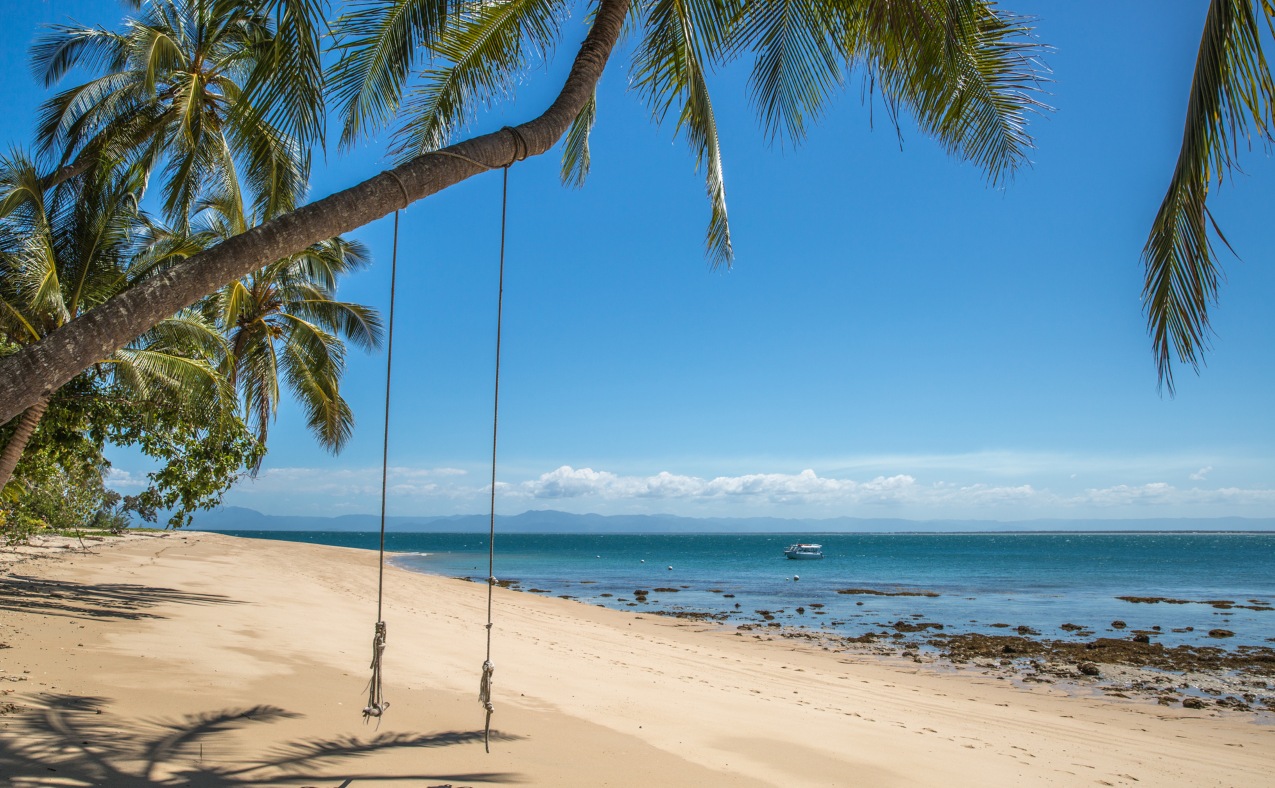
How to Choose the Right Queensland Islands for Your Holidays
Our Queensland travel guide will help you decide which region, town and cities in Queensland you should visit on your next trip. We cover the basics of planning a trip to Queensland and give you a quick rundown on the major tourist regions and the most popular things to do in Queensland’s cities and towns.
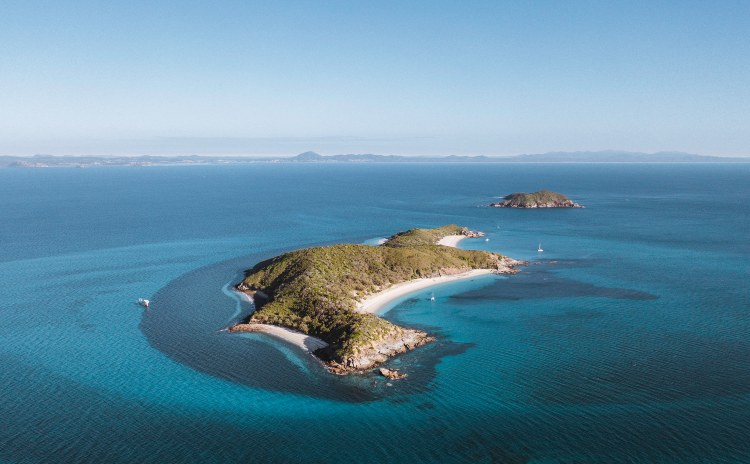
How to get to Queensland
Unless you have a lot of time for your trip, you will probably want to include some internal flights because of the distances between the major cities. If you plan on visiting the reef and Brisbane, for example, a flight is by far the best option.
Queensland has 3 international airports
- Brisbane International Airport – from all continents
- Gold Coast Airport – Japan, Singapore, New Zealand, Kuala Lumpur, Seoul and Bali
- Cairns Airport – Flights from Japan, Singapore, Auckland, Bali and Hong Kong
Key Domestic airports
- Sunshine Coast – 1hr 30 from Brisbane, 2hrs 15 from Sydney and 2hrs 55 from Melbourne
- Hervey Bay – 55 minutes from Brisbane, 1hr 45 from Sydney and 3hrs 50 from Melbourne
- Whitsundays (Proserpine Airport) – 2hrs from Brisbane, 2 hrs 30 from Sydney and 2 hrs 55 from Melbourne
- Hamilton Island – 3hrs from Sydney, 4hs from Melbourne, 2hrs from Brisbane, and 2hrs 45 from Darwin
- Cairns – 2hrs 10 from Brisbane, 2hrs 55 from Sydney, 3hrs 20 from Melbourne, and 2hrs 35min from Darwin
Interstate Trains
Direct trains from Sydney (14 hours) and Adelaide to Brisbane (2 days and 7 hours). From Brisbane, several trains can be taken to explore the state – you will find them here .
Interstate Buses
The bus from Sydney to Brisbane takes approximately 13.5 hours. You can buy passes that allow travel along the whole east coast over a period of weeks at reduced rates.
highlights of Queensland Coast
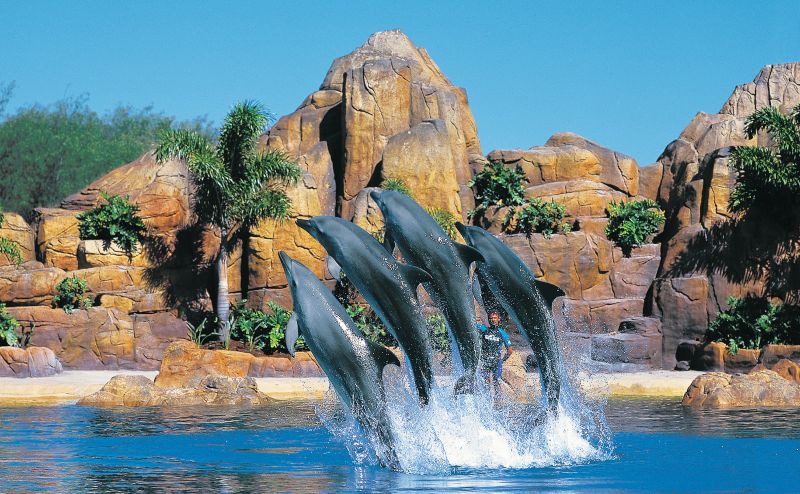
How to get Around Queensland
Public transport.
Queensland has an extensive regional train network that will get you to many of the regions listed above. Greyhound operates numerous routes and offers an East Coast Pass . South East Queensland uses the Go Card . It can be used on all Translink buses, trains (including the AirTrain), ferry and tram services in greater Brisbane, Ipswich, Sunshine Coast, and Gold Coast.
If you have not driven in Australia before, I suggest reading our tips for driving in the land Downunder. While driving between some towns and cities is comfortable, the distances between Brisbane and Cairns or even the Whitsundays make flying appealing.
Driving times
- Gold Coast to Brisbane – 1hr
- Brisbane to Sunshine Coast – 1hr 20m
- Brisbane to Noosa – 1hr 40m
- Brisbane to Hervey Bay – 3hrs 20m
- Brisbane to Cairns – 19hrs
- Hervey Bay to Whitsundays – 9hrs 30
- Whitsundays to Cairns – 7hrs
- Cairns to Port Douglas – 1hr
Rideshare services are legal and regulated but may not operate in all cities across the state.
Explore more of Queensland

The 6 Best Day Trips From Brisbane

12 Lip-Smacking Craft Beer Bars and Breweries in Brisbane
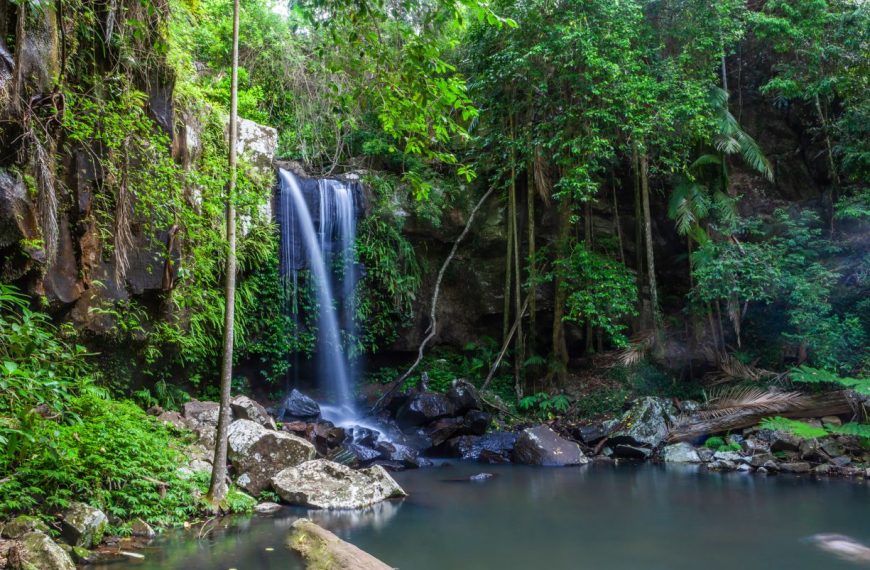
Stunning Waterfalls in the Gold Coast Hinterland

11 Sea and Self Drive day Trips from Townsville North Queensland

7 of the Best Areas to Stay in Brisbane on a Short Visit

When is the best time To Visit Queensland?
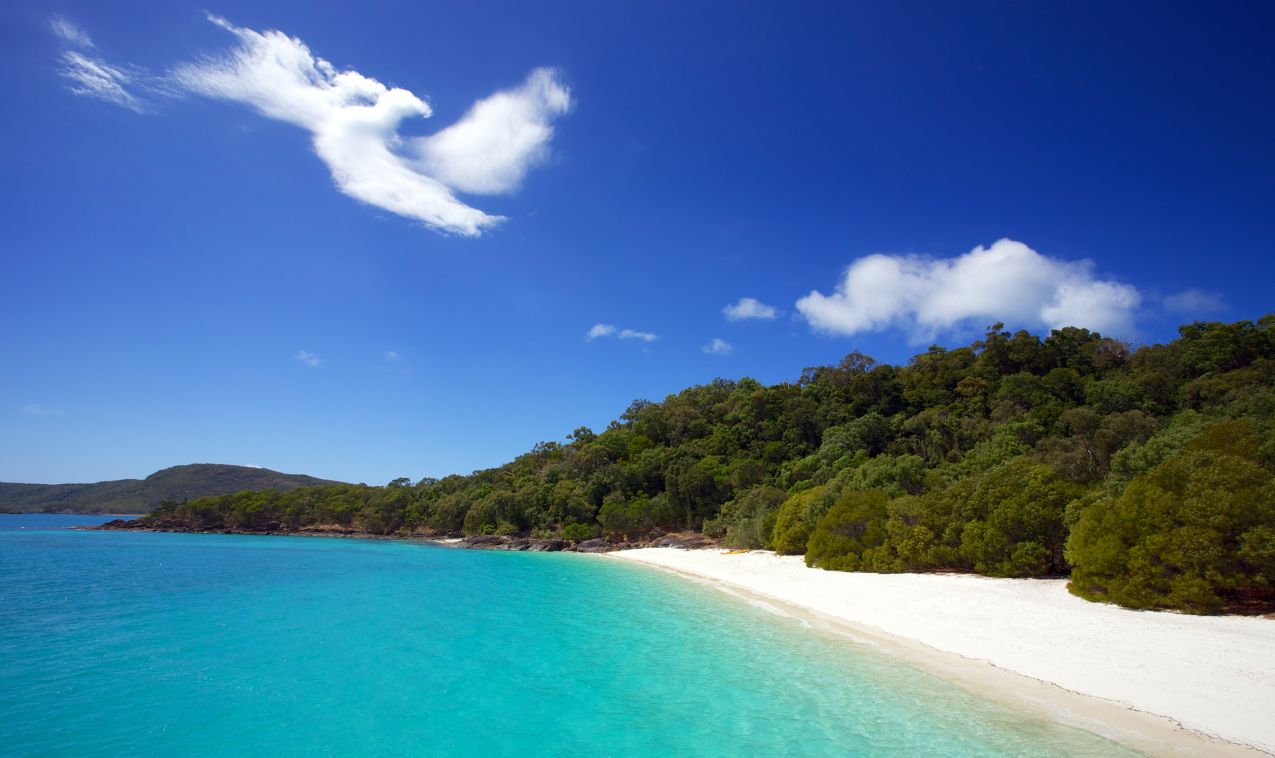
17 Queensland Beaches You Will Love
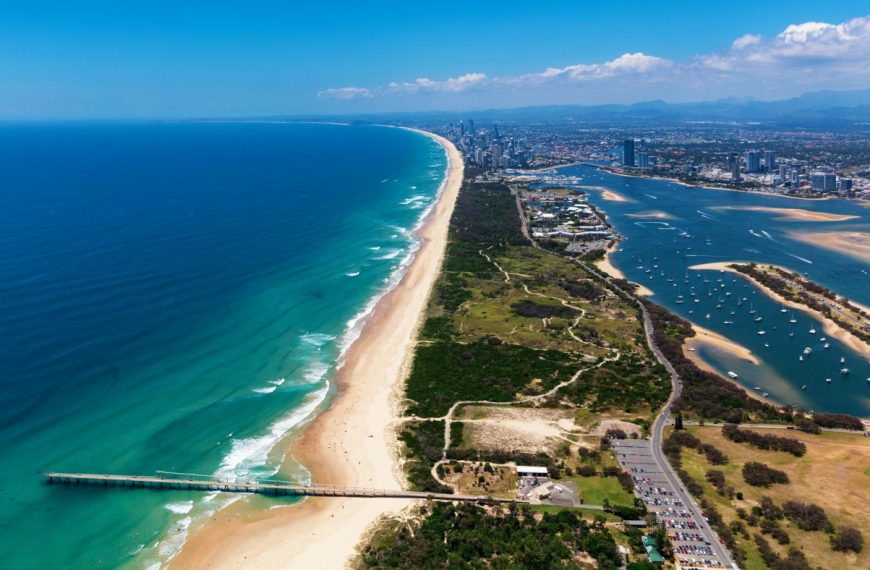
Gold Coast Travel Guide
Got a question? Head over to our Australia Travel Tips Facebook Group and ask a local.
Privacy Overview
- 3 Other destinations
- 4.1 History
- 4.2 Politics
- 4.3 Climate
- 4.4 Geography
- 4.6 Visitor information
- 6.1 By plane
- 6.4 By train
- 6.5 By boat
- 7.1 By plane
- 7.2.1 Distance table (kilometres)
- 7.3 By train
- 8.1 Aboriginal rock art
- 8.2 National parks
- 8.3 Natural and cultural attractions
- 8.4 Migrating whales
- 8.5 Nesting Sea Turtles
- 8.6 Great Barrier Reef
- 8.7 Observation points
- 8.8 Paleontology
- 9.1 Islands and beaches
- 9.2 Natural encounters
- 9.3 Major events
- 11.1 Markets
- 12.1 Wineries, vineyards and Breweries
- 14.1 Beaches
- 15.1 Mosquito-borne diseases
Queensland (pronounced KWEENZ-land ) is the northeastern state of Australia , famous for natural wonders, such as the Great Barrier Reef , the Daintree Rainforest or K'gari . Its population of 5 million are mostly found in the capital Brisbane and the nearby city of Gold Coast in southeast , whereas much of the rest of the state is sparsely populated.
Climate shifts within Queensland; the inland west is desert, the north is tropical with a wet and a dry season, and the south-east is subtropical. In the (southern) winter, it is a popular getaway for sun-seeking Australians from further south.
There are five UNESCO World Heritage Sites spread across the whole state, including the Great Barrier Reef, the Wet Tropics of Queensland, the Gondwana Rainforests of Australia, K'gari, and the paleontology of Riversleigh . There are also two sites on the tentative list: the Bunya Mountains National Park , home of the 10-kg bunya pine, and the Cooloola section of the Great Sandy National Park .
Regions [ edit ]

Cities [ edit ]
- -27.467778 153.027778 1 Brisbane – the state capital
- -24.85 152.35 2 Bundaberg – the ginger beer capital of the world, home to the world famous ginger beer company "Bundaberg"
- -16.925556 145.775278 3 Cairns – popular holiday spot in North Queensland is a gateway to the Great Barrier Reef
- -28.016667 153.4 4 Gold Coast – famous for Surfers Paradise
- -26.3886 153.035 5 Noosa – known for its beaches, an alternate holiday spot to the Gold Coast
- -16.483611 145.465278 6 Port Douglas – an alternate gateway to the Great Barrier Reef
- -23.378972 150.510894 7 Rockhampton – industrial and agricultural centre of the north, and is the regional centre of Central Queensland
- -26.654167 153.093333 8 Sunshine Coast – a budget and northerly alternative to the Gold Coast
- -19.262222 146.815833 9 Townsville – colloquially called the Capital of North Queensland
Other destinations [ edit ]
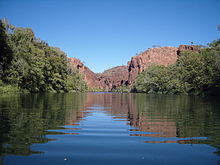
- -18.7014 138.488 1 Boodjamulla National Park ( Lawn Hill ) – home to Riversleigh, one of the largest fossil deposits in Australia and a world heritage site along with several scenic gorges.
- -24.6358 147.997 2 Carnarvon National Park – known for its impressive landscape and its large amount of rock art
- -16.2 145.4 3 Daintree Rainforest – the world's oldest living rainforest with lush tropical rainforest of breathtaking beauty including lowland rainforest, swamps, mangroves and beaches – all available via walking tracks
- -25.24 153.15 4 K'gari – World Heritage listed island and the only place on the planet where rainforest grows on sand. Over 120 km long and 30 km across at its widest point. Features a wealth of natural attractions including pristine fresh water lakes, champagne pools, amazing coloured sand formations and a shipwreck.
- -26.9 152.92 5 Glass House Mountains National Park – according to Captain Cook, they apparently "looked like glass houses"
- -19.266 148.587 6 Great Barrier Reef – the world’s largest living organism, stretching over 2,000 km in length and 348,000 m² (larger than the United Kingdom, the Netherlands and Switzerland combined). Home to tens of thousands of species of brilliantly coloured fish, corals and other marine life including whales, dolphins and turtles.
- -18.229444 146.232778 7 Hinchinbrook Island National Park – the largest island on the Great Barrier Reef
- -28.1422 153.115 8 Lamington National Park – the most prominent park of the Qld section of the World Heritage listed Gondwana Rainforests of Australia . Located in South East Queensland , is the most extensive areas of subtropical rainforest in the world with large areas of warm temperate rainforest and nearly all of the Antarctic beech cool temperate rainforest.
- -20.29827 148.92517 9 Whitsunday Islands – off the coast in Central Queensland and home to some of the world's whitest beaches.
Understand [ edit ]
Known as the Sunshine State, Queensland is about seven times the size of Great Britain, and is larger than every US state and all Canadian jurisdictions but Nunavut . It offers a diverse array of pristine rainforests, endless beaches, mountain peaks, rangelands and laid-back communities that conjure a southern Shangri-La. Queensland also has its unique Outback culture – something that's not often associated with the state.
Before travelling to Queensland, the first thing you should remember is that Queensland is huge and you will not be able to explore all of it at once, or doing that would be trying to attempt the entire American south in one go. The state stretches from -9° from the equator in the north down south to -29° which is about 2,200 km (1,400 mi) as the crow flies. For those that find it hard to conceptualise, Vancouver in Canada to Tijuana in Mexico is only 1,900 km (1,200 mi) as the crow flies and 2,000 km (1,200 mi) from Florida Keys to Toronto – so more than an entire coastline of the United States except that it's confined to a single state. Even if you visit Queensland as many times as you possibly could, the state is never short of something to offer.
One noticeable distinction that you might notice is that Queenslanders have a strong sense of identity, more so than the other mainland states. That is, someone from Queensland is more likely to say they're from Queensland than Australia. It also means that placenames are more likely to be identified by its state, so you're more likely to encounter "Thursday Island, Queensland", as opposed to "Thursday Island, Australia", per se. The main exception to this is Cairns, which should be no surprise as it's one of the state's major international tourist destinations.
History [ edit ]
The first people to settle Queensland were Indigenous Australians around 60,000 years ago and it is believed that over the course of 10,000 years the entire continent including Queensland was subsequently settled. How they came is not exactly known, but it's likely they came via boat or land bridge across Torres Strait (the Torres Strait was land before the last ice age), and became divided into over 90 different language groups.
Starting around 25,000 BC, when the Ice Age began, large areas of the area were temporarily uninhabitable. With the end of the Ice Age around 15,000 BC, humans and animals spread across the land again. There were many semi-permanent indigenous settlements, especially along the coast, but also in the mountainous areas and inland. The population of the area which makes up Queensland today before the colonisation of Australia is estimated at between 200,000 and 500,000.
The first known European to set foot on Queensland was the Dutch explorer Willem Jansz in what is now the town of Weipa in the Cape York Peninsula in the north in 1606. The state was also explored by Dutch, Portuguese and French navigators. Captain James Cook made his famous voyage along the coast in 1770 by sailing along the east coast of the state. At Possession Island , he had claimed the entire east coast of Australia for Britain.
Queensland became a part of New South Wales in 1824 and was established as a separate colony by Queen Victoria on December 10, 1859. The first elections took place in 1860.
In 2009, Queensland celebrated the state's 150th anniversary and several "Q150" icons have continued to play a vital role into the Queensland today, some way or another.
Politics [ edit ]
A founding state in the Commonwealth of Australia, Queensland is a parliamentary monarchy and is divided into 53 administrative regions.
King Charles III is represented as head of state by the Governor of Queensland, while the head of government is the Premier who is appointed by the Governor but must have the support of the Queensland Legislative Assembly. As of 2024, the Premier of Queensland is Labor Steven Miles who forms an "Executive Council" from among the 93 members of the Queensland Legislative Assembly.
The elected members of the Legislative Assembly of Queensland are responsible for legislation. Queensland is the only state in Australia with a unicameral system. The members of Queensland's Legislative Council, the state's lower house, voted to abolish the body themselves in 1922. Cabinet ministers are appointed by the Governor from among the members of the Legislative Assembly on the recommendation of the premier.
In 2001, the state passed a new constitution, repealing most of the various Acts of Parliament that had built the constitution. The new constitution took effect on June 6, 2002, on the anniversary of the formation of the independent colony of Queensland upon the signing of the Letter Patent by Queen Victoria in 1859.
Climate [ edit ]
Queensland is largely located in the tropics meaning that the further north you go, the temperature difference between summer and winter becomes more a case of rainfall. The dry season is from April to October and is usually the best time to explore North Queensland as the roads are very passable (particularly in July and August) and is cooler in Brisbane and Surfers Paradise and therefore winter is the recommended season for the entire state. It's hardly cold but mostly in the mid-20s C but this is subject to region – some parts in the north can go to the low 30s during the winter, but remember that most of Queensland is within 28 degrees from the equator.
The rainy season is from November to March and the area north of Townsville is then regularly plagued by heavy rainfall and an occasional cyclone (hurricane) or tropical storm. During this period it can be oppressively hot due to the high amount of moisture in the atmosphere. Flooding also occurs regularly around Innisfail, between Townsville and Cairns and in the area around Rockhampton and Bundaberg.
The area west of the coastline between Brisbane and Mackay is plain barren desert. In summer (November - April) it gets very hot here during the day. Make sure you have enough water with you when you enter this area.
Cyclones and harsh storms regularly hit the state during the wet season. Unless you are going to the southeast of the state during the wet season, Queensland is generally not a place to be during the wet season. Many roads, particularly in the north, are closed for around four months of the year, meaning you could be stranded for months on end.
Geography [ edit ]
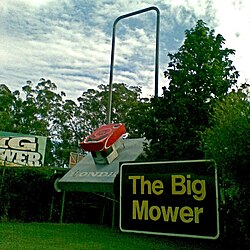
Queensland is a large, diverse state stretching over 1,730,648 km 2 (668,207 sq mi). Driving distances are long but doable if you plan carefully. There are 12 main highways but the coastal route is scenic and offers plenty of diversions.
Time [ edit ]
Queensland is in the UTC+10 time zone, 30 minutes ahead of the Northern Territory . Unlike New South Wales or the other southern states, it doesn't observe daylight saving, so set your watch one hour back when you cross the border into Queensland during summer.
Visitor information [ edit ]
Accredited visitor information centres are available for visitor help and advice when travelling around Queensland. For a list of where to find these centres, Visit Tourism Queensland’s Visitor Information Centres page . On top of that, some national parks may also have visitor centres, although this is not as commonly found as other states.
- Queensland Holidays website
Talk [ edit ]
Most of Queensland has an English speaking majority and Queenslanders are known for their classic Aussie slang and accent, often the accent that Australia is internationally recognised for, thanks to Steve Irwin. However, this is not really heard in the southeast, but it is almost always heard once you go out either west or north.
In the Torres Strait Islands , located in the far northern parts of the state, the islanders speak Torres Strait Creole , which is a creole language based on English. It is not easily comprehensible to an English speaker nor is it related to any Aboriginal language (though remember that the Indigenous peoples of the Torres Strait Islands are not Aboriginal) and Torres Strait Creole is more closely related to Tok Pisin and Solomon Islands Pidgin. However, signs are all in English, or bilingual so you will generally not have a language issue.
Get in [ edit ]
By plane [ edit ].
Most interstate travellers have the choice of flying to Queensland with Qantas , Virgin Australia or Jetstar . Flights to major towns are frequent and regional airports are dispersed throughout the state.
The main international airport is in Brisbane , while Cairns and the Gold Coast also serve some international flights.
Domestic airports with direct flights from interstate are at Bundaberg, Gladstone, Toowoomba, Townsville , Mackay , Rockhampton , the Fraser Coast , the Whitsunday Coast, and the Sunshine Coast .
Other airports in smaller towns in Queensland are served by indirect flights via one of the airports above.
Brisbane Airport
- Brisbane Airport is a 15 km or 20 minute drive from the CBD, or about 25 minutes by Airtrain , which also continues on to the Gold Coast .
- The AirTrain runs every 30 minutes from 6AM to 7PM every day and connects to Central station.
- The domestic terminal is separate from the international terminal, but AirTrain provides a 5-minute connection.
- There are shuttle buses which provide direct hotel transfers, and plentiful taxis and hire car providers.
- Both terminals provide undercover parking for short and long term periods.
- Brisbane Airport provides a handy map of flight routes and general timetables.
Cairns Airport
- Cairns Airport is located 7 kilometres north of the CBD.
- Domestically, Qantas, Jetstar and Virgin Australia all operate out of Cairns , with scheduled services to most Australian state capitals, as well as regional locations.
- Cairns also handles international flights from Hong Kong , Singapore , Japan , Papua New Guinea and New Zealand .
- Rental Cars can be located at the domestic terminal in the QantasLink arrival lounge.
- Shuttle buses to Cairns and Port Douglas depart hourly.
- Taxis are also available 24 hours a day, and the fare to the city centre costs around $16.
- Short-term and long-term parking is located next to the passenger terminal.
Gold Coast Airport
Gold Coast Airport is on the Gold Coast Highway at Bilinga (close to Coolangatta ) on the southern end of the Gold Coast , and is only minutes from the beach. Part of the runway actually extends into New South Wales .
- The airport is 30 minutes’ drive from Surfers Paradise and an hour from Byron Bay . The drive to Brisbane can take an hour and fifteen minutes.
- Jetstar, Qantas, and Virgin Australia all have frequent domestic flights from Adelaide , Melbourne , Canberra and Sydney .
- New airline Bonza flies from smaller interstate airports like Albury , Darwin , Launceston and Mildura .
- Internationally, AirAsia X and Air New Zealand fly in from New Zealand and Malaysia .
- Surfside Bus Lines offer convenient transfers to hotels and theme parks.
- Car rental companies can be located opposite the check-in counters at the airport.
- Taxis are available immediately outside the terminal.
Interstate Travel Times
- Sydney to Brisbane – 1 hour
- Melbourne to Brisbane – 2 hours
- Adelaide to Brisbane – 2.5 hours
- Darwin to Brisbane – 4 hours
- Perth to Brisbane – 6.5 hours
By bus [ edit ]
There are a number of companies that operate bus services between cities and towns throughout Australia, and there are also interstate trains.
By car [ edit ]
Queensland’s wide open spaces make it ideal for exploration by car. The roads are high quality and well-signposted so getting here is easy.
Driving times
- Sydney to Brisbane – 8.5 hours
- Melbourne to Brisbane – 18.5-19 hours
- Darwin to Brisbane – 25-40 hours
The drive from Melbourne is ideally covered over two days (minimum), and Sydney to Brisbane can be driven in a day.
Suggested routes
- From Melbourne or Sydney , take the coastal Pacific Highway (M1/A1); the more inland New England Highway (A15) through New South Wales ; or the inland A32 from Adelaide which also goes through New South Wales .
- If you have time up your sleeve, you can continue taking the coastal route (the Bruce Highway, A1) all the way north to Cairns . The highway is scenic, comfortable to drive and offers plenty of attractions along the way; but you’ll need to allow two to three days for the journey from Brisbane .
- For an alternative entry into Queensland, drive up from New South Wales via the New England Highway (A15) through the Southern Downs. This will take you through Warwick and Toowoomba , towns rich in pioneer history. From here you can continue north to the vineyards of the Granite Belt and South Burnett regions.
- South East Queensland is well-connected with motorways and distributor roads, from the Gold Coast all the way up to the Sunshine Coast .
- Serious outback travellers heading east from the Northern Territory can enter Queensland via Mount Isa on the Barkly Highway (A2); or drive up from South Australia via the Birdsville Track (an old stock route and now a dirt track) and on to Longreach . This journey is recommended in a four-wheel drive vehicle.
It is important to be realistic about the distances and travel times involved: for instance the trek from Mount Isa to Brisbane covers over 1800 km of road - which equates to about 22 hours of continuous driving. See Driving in Australia
If backpacking or on a tight budget, check to see if you can double up with other low-budget travellers who may be driving interstate, or investigate rental car places that sometimes offer deals charging less to return their stock to capital cities.
By train [ edit ]
The XPT service from Sydney is the only interstate service. The trip from Sydney to Brisbane takes around 14 hours; the connecting journey from Sydney to Cairns takes a little less than two days if you choose not to break it up along the way.
The Brisbane XPT train runs once a day from Sydney’s Central station to Brisbane’s Roma Street. The train departs at 4:20PM in the afternoon, travels overnight and then arrives in Brisbane at 6:30AM the following morning. You can also board the train at Strathfield or Hornsby station, at Broadmeadow in Newcastle or at one of the stations along the way.
You can also travel to Brisbane during the day by catching the NSW Trainlink Casino XPT train from Sydney Central station to Casino , then changing to a connecting coach. The bus takes you from Casino via the Gold Coast to Brisbane’s Roma Street station. The whole journey takes fifteen and a half hours - of which only the final three hours are on the bus. The train departs Sydney Central station every day just after 7AM in the early morning, and the connecting coach arrives at Brisbane Roma Street station at around 10:30PM that evening.
By boat [ edit ]
Interstate and International Cruise Liners regularly dock into Brisbane , and sail on to the Whitsundays , Cape York , Townsville , Cairns and the Great Barrier Reef .
Luxury cruises liners that regularly call into Brisbane include P&O Cruises , Carnival and Oceania Cruises .
Travel times
- Sydney to Brisbane : 1 sea day
- Brisbane to Whitsundays : 1 sea day
- Brisbane to Cairns : 2 sea days
- Brisbane to New Caledonia : 2 sea days
Portside Wharf is Brisbane’s cruise ship port. It's in Hamilton, 6 km from the Brisbane CBD or about a 20-minute drive. Buses into town and ferries service the port regularly. It also houses a fresh produce market, riverside restaurants, cafés and eateries, boutiques and cinemas. Portside Wharf provides a handy shipping schedule.
There are occasionally ferries from the Torres Strait Islands to Papua New Guinea although the ferries have been halted due to Covid with no reoperation date set.
Get around [ edit ]
Air travel in Queensland is easy to organize. With international airports in Brisbane, Cairns, Townsville and the Gold Coast, plus many regional and island airports, air travel is an efficient and reliable way to get around. Qantas, Virgin Australia and Jetstar and a number of smaller regional carriers operate in Queensland.

Queensland's road network is extensive, especially on the coast. Many inland or outback towns can only be reached by dirt tracks, some of which are only suitable for four wheel drives. Ensure if travelling into the bush or the outback, you take adequate supplies and let others know where you will be going and when to expect you back. The state also has over 600 km (370 mi) of motorways, though all but two are in SE Queensland (and to an extent, the future Bruce Highway upgrade in Curra).
Although the distances may scare you off, the roads in Queensland are generally well maintained. The south-east may be the only region with an extensive motorway network, though in areas outside SE Queensland, you will still be able to travel at motorway-like speeds. Motorways in Queensland are typically marked with an "M" prefix, though some motorways may use a State Route number (e.g. Sunshine Motorway also having the State Route 70 route number) while major highways are marked with either an "A" prefix, or use a National Highway/Route – the former marked in a green and yellow pentagon while the latter with black and white instead. Other smaller sealed routes or urban routes that don't fall in to either of the former two mentioned are marked with State Routes, usually in a blue and white marker.
As with all the other states, the default urban limit is 50 km/h (31 mph) and the default rural limit is 100 km/h (62 mph). The maximum state speed limit is 110 km/h (68 mph), which can be found on most rural highways and motorways.
Distance table (kilometres) [ edit ]
Queensland Rail Travel offers Australia's largest and most comprehensive network of long-distance trains, carrying more than half a million passengers each year. The dedicated tourism arm of QR Limited, the company offers a fleet of long-distance passenger trains connecting Brisbane to a host of holiday destinations throughout Queensland including Cairns , Townsville , the Whitsundays , Mount Isa, Charleville and Longreach . Each of Queensland Rail's services offer a unique travel experience. The company packages its rail experiences with accommodation, fully-guided tours, cruises, flights and car hire. It operates travel centres throughout Queensland as well as a call centre.
Some of the services offered by Queensland Rail :
- The Spirit of Queensland - Brisbane to Cairns . This train offers spacious seats that transform into lie flat beds, similar to business class on a plane.
- The Spirit of the Outback - Brisbane to Longreach. This train offers traditional sleepers, to the heart of the outback.
- Tilt Train - Brisbane to Bundaberg/Rockhampton. The fastest narrow gauge trains in the world, the Tilt Train provides an efficient, comfortable and modern standard of travel.
- The Westlander - Brisbane to Charleville. A scenic journey from Brisbane travelling across the Great Dividing Range and through the rich farmlands of South East Queensland, before arriving in Charleville , the largest town in the south-west outback. There are no sleepers on the train, and dining options are limited, so you are advised to bring some extra food with you before boarding.
- The Inlander - Townsville to Mount Isa . A scenic journey from Townsville travelling across the Great Dividing Range and through Hughenden and Julia Creek, before arriving in Mount Isa , the mining centre of the state, taking about 21 hours. There are no sleepers on the train, and dining options are limited, so you are advised to bring some extra food with you before boarding.
Most of these services depart from Brisbane’s centrally located Roma Street station.
All urban bus services are run by Translink . Visit Translink's website for timetable information, maps and a helpful Journey Planner to get a wide range of transport options. A Translink ticket will take you wherever you need to go within each region.
See [ edit ]
Aboriginal rock art [ edit ].
The place that Queensland's most known for its rock art is the Art Gallery in the Carnarvon Gorge National Park, which contains some of the finest Aboriginal rock art in Australia. Just 5.6 km from the trailhead, at the junction of Kamoloo Creek, a signposted access track leaves the main walking trail upstream of crossing number 10, providing a gentle climb to the escarpment base where the site is located. Boardwalks, interpretive signs and seating facilities provide optimum conditions for visitors to appreciate this diverse range of Aboriginal artwork without endangering it. This extensive gallery contains more than 600 stencils and 1300 engravings. Aboriginal rock art on the sandstone overhangs is a fragile reminder of the Aboriginal people who used the gorge for thousands of years for ceremonies and rituals.
National parks [ edit ]
Queensland has the most national parks in Australia, with around 237 national parks. Not all of them are visited, but there's some particular ones that get more visitors than others:
- Glass House Mountains National Park was named by Captain Cook as he mapped the Queensland coast in 1770. The 'Glass Houses' are distinctive volcanic plugs which rise abruptly out of a patchwork of farms and forests. The Glass House Mountains are spiritually significant to the local Aboriginal people. The park is made up of several sections that include most of the peaks and forest areas. Drive to the Glass House Mountains lookout for a great view of the multiple peaks. Within the park's sections there are eight walking tracks ranging from 25 minutes to three hours, and catering to all levels of experience. Fit walkers with rockclimbing skills can reach the summits of Mounts Tibrogargan, Ngungun or Beerwah . Suitably equipped experienced rock climbers can climb and abseil Mount Ngungun.
- Wallaman Falls National Park is part of the Wet Tropics World Heritage Area, boasting the highest, permanent, single-drop waterfall in Australia. Open forest dominates the ridge tops. Rainforest lines the gullies and creeks. The area is home to endangered cassowaries and musky rat-kangaroos. Stroll 800 metres along the banks of Stony Creek on the Banggurru walk, and learn about the rainforest. Look for platypus in the creek below the falls. To enjoy a closer look at the falls, take the 3.2-km Jinda walk into the gorge. Experienced bushwalkers can choose from one of three overnight hikes that are part of the Wet Tropics Great Walk.
- The fossil site in Riversleigh , Boodjamulla National Park is a UNESCO World Heritage site along with Naracoorte Caves National Park in South Australia, containing some of the largest deposits of fossils, in particular, that of Australian Megafauna
- Mossman Gorge is a very accessible and scenic section of the World Heritage-listed Daintree National Park Strangler figs and epiphytic plants flourish and the crystal-clear Mossman River cascades over granite boulders. The area is also home to colourful Boyd's forest dragons. Stroll along the 400-m walking track to viewing platforms over the Mossman River. Look for the brilliant blue Ulysses butterfly and birds such as the eastern yellow robin. Take the 2-km loop track through lush, green rainforest to learn about the plants and find out how the local Kuku Yalanji people use them in traditional ways.
- The Great Sandy National Park in K'gari is the world's largest sand island, and is a must for any keen enthusiastic 4WDer. The park is also the only place where forest grows on sand.
- The Undara Lava Tubes in Undara Volcanic National Park is 3.5 hours from Cairns in Tropical North Queensland's Gulf Savannah lies a land so different in contrasts - and the Undara Experience. Undara is a pristine wilderness possessing one of the longest and best preserved lava tubes of its kind anywhere in the world.
Natural and cultural attractions [ edit ]
Queensland has many natural attractions outside national parks, and even though it may not be a "national park", they are very much just as interesting to see.
- The magnificent Moreton Bay - the mouth of the Brisbane river, and home to a collection of islands where boating, fishing, sailing, camping, holidays and day-trips make Brisbane such a brilliant out-door adventure city. Take a guided tour around beautiful St Helena Island, a former jail from when Brisbane was a penal colony. Spend the weekend at Stradbroke Island and surf on magnificent beaches or take the kids to Coochie Mudlo Island for a quiet day out on flat water beaches.
- SS Yongala Wreck - lies within the Great Barrier Reef Marine Park, 12 nautical miles from Yongala Dive's base at Alva Beach in Queensland. It sank in 1911 with the loss of all aboard, creating one of Australia's most intriguing maritime mysteries as she lay undiscovered for more than half a century. Lying in 14 to 28 m of water and over 100 m long it is one of the largest and most intact historic shipwrecks in Australia and provides an exciting adventure for divers due to its coral encrusted structure, the depth and the incredible array of marine life.
- Atherton Tablelands - the "capital" of the lovely Tropical Tablelands, a land of beautiful lakes, waterfalls, rich red soil and tropical rainforest. Here the temperature is cooler, the pace is slower and there is a feeling of relaxation in the air. The rich Tableland area is famous for producing peanuts, maize and potatoes. The area also has a number of natural attractions such as the Curtain Fig Tree, Millaa Millaa Falls, crater lakes and amazing rock formations. Atherton is an excellent base from which to explore most places of interest in the Tablelands area.
- See Whitehaven Beach from the air - many commercial airline companies exist that provide flight services over Whitehaven Beach . Enjoy a helicopter flight over Islands and waterways then quality time on a secluded beach in the Whitsunday's and treat yourself with a gourmet picnic hamper and ice-cold champagne. Flight types vary but can include scenic flights to and from the Reef as well as a stop over on Whitehaven Beach , Langford Reef area and a scenic flight over Hook, Hardy's and the famous Heart Reef, then continue near Langford Reef where you can swim and view the breathtaking coral gardens at your leisure with a gourmet champagne picnic hamper.
Migrating whales [ edit ]
The coast of Queensland provides visitors first-hand experience to view migrating whales during the winder months. There is various vantage points right downs the coast, but to really get the most for your whale watching experience, jump on board a whale watching tour with one of the many companies. The protective waters of Hervey Bay is the most popular destination to view these gentle giants of the sea. Viewing is generally only throughout July to November.
Nesting Sea Turtles [ edit ]
Many varieties of turtles such as the loggerhead, green, leatherback and flatback nest from October to March each year along the Queensland coast from Bundaberg in the south to the Cape in the tropical north as well on the islands of the Southern Great Barrier Reef (Heron, Wilson, Lady Elliot, Lady Musgrave). The Turtle Nesting and Hatching season is an amazing experience and visitors to Queensland will find opportunities to witness these nocturnal events in a controlled environment at a number of island and mainland locations. Near Bundaberg , Mon Repos supports the largest concentration of nesting sea turtles on the east Australian mainland. Viewing is generally only from November to March. You can help conserve turtles by participating in a six-day camp, working alongside the Mapoon Aboriginal owners and researchers as they measure and tag nesting Flat Back and Olive Ridley turtles, fit feral pig exclusion devices to the nesting sites and remove nets from the beach. Viewing is generally only from June to September at Mapoon, Western Cape York.
Great Barrier Reef [ edit ]
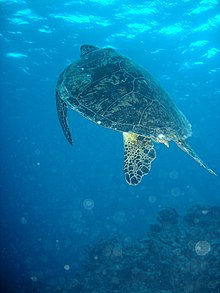
Although the Great Barrier Reef has many things to do, the reef itself is something to see in its own right. One of the seven wonders of the natural world, this underwater labyrinth will treat you to spectacular displays of nature found no where else in the world. Stretching from Tropical North Queensland in the north to Capricornia in the south, the rare, ancient beauty of the reef can be enjoyed from many different points of view. On the Whitsundays you can dive amongst the coral on a scuba-diving adventure, or watch the reef come on a purpose-built pontoon. From Townsville you can wonder at its beauty from the comfort of a glass-bottomed boat or view from helicopter joy-flight. On the Southern Great Barrier Reef, off the coast of Mackay and Central Queensland you can go snorkelling in a sheltered coral cay, or keep your clothes dry on a leisurely reef walk.
Observation points [ edit ]
- Underwater observatories - There is no need to get your feet wet. Observe all the wonders of Queensland's marine life from behind the glass of an observatory. Queensland is host to a number of underwater observatories including; Reef HQ - the world's largest living coral reef aquarium and national reef education centre for the Great Barrier Reef Marine Park. UnderWater World - a multi-award winning, all weather, tourist attraction located in the heart of the Sunshine Coast .
- Q1 Observation Deck - Australia's only beachside observation deck, located in Surfers Paradise on the Gold Coast . QDeck takes you to the highest point above the city, providing stunning 360-degree views from the surf to the hinterland and beyond. Rising 235 m into the sky, QDeck is on level 77 of the iconic Q1 tower. Your journey begins with an inside look at the construction of this landmark development before boarding one of the world's fastest express lifts which transports you from ground to level 77 in less than 43 seconds. Once at the top, you will see spectacular views which reach on a clear day from Brisbane to Byron Bay .
Paleontology [ edit ]
- Australian Age of Dinosaurs - home to the world's largest collection of Australian dinosaur fossils. A working dinosaur museum and research laboratory on 14,000 hectares of spectacular mesa plateau with vast scenery, wildlife and walking trails. At the museum you'll see and hear about their exciting dinosaurs, including gigantic sauropods and "Banjo", Australia's greatest carnivorous dinosaur.
- The world heritage listed Riversleigh in Boodjamulla is home to one of the largest collections of Australian megafauna.
- For those that find driving to Boodjamulla National Park too much, the Riversleigh Fossil Centre in Mount Isa has a collection of fossils from that area, much more accessible
Do [ edit ]

If there's anything that Queensland is never short of, it's adventure – fly through the air, dive through the coral, or ride the wild river rapids - a Queensland Adventure holiday really gives you something to write home about! With craggy mountain heights to scale, deep limestone caves to delve and vast treks of unchartered Outback to explore, Queensland is a land brimming with surprising discoveries and exciting adventures to enjoy. In Queensland you can learn how to hang glide off a mountain or ride a camel along a golden beach. You can camp by a billabong or feel your adrenalin surge on a real life cattle muster during a farm stay on the Western Downs. From an inflatable jet boat you can watch the whales waltz or take a jet ski eco-safari through the glorious Whitsundays archipelago. Then as the sun sets over the ocean, watch the Reef come alive under the stars, during your overnight stay on a purpose-built ocean pontoon. Treat the whole family to an exhilarating day at a world-class theme park. Feel the rush of the rollercoaster, go behind the scenes of a movie set, and get up close and personal with exotic animals from around the world.
Islands and beaches [ edit ]
Queensland is home to some of the most stunning islands and beaches in the world, and each one invites you to come and share in its sumptuous delights. Set like sparkling jewels in and around the pristine waters of the blue Pacific Ocean, Queensland’s islands and beaches are a true national treasure. On the islands you can treat yourself to a day spa, dive through the Great Barrier Reef, improve your handicap with a round of golf, then, as the sun sets over the water, indulge in fresh, local, mouth-watering food and wine. With sands so clean and white they dazzle the eye, a day spent on a Queensland beach is truly one of life’s greatest pleasures. With palm trees swaying lazily on one side and clear azure waters gently lapping at the other, the siren-call of a Queensland beach is impossible to ignore.
Natural encounters [ edit ]
Watching the sun set over the ocean from the white sands of a deserted tropical beach is truly one of life’s greatest pleasures. Soaking up the view from the crest of a mountain you’ve just scaled is another. And watching dolphins at play in the turquoise waters of a tropical lagoon is a memory you’ll treasure for a lifetime. All these experiences and more are waiting for you in Queensland’s wild natural environments. From the spinifex grasslands of the Outback to the lush rainforests of the Gold Coast Hinterland, Queensland is a nature-lover’s paradise. Breathe in the fresh, clean Queensland air and escape to a world free of phones, emails, meetings and deadlines. In the north, the World Heritage listed Daintree Rainforest yields to pristine sandy beaches and the clear blue waters of the Great Barrier Reef. In the south, majestic mountains stand guard over the rare flora and fauna within its fold. And in all places in between you’ll find rare and exciting animal encounters that will delight the whole family!
Major events [ edit ]
Queensland is host to a large range of events right across the state.
Some of the major events in Queensland include;
- January – Brisbane International Tennis Brisbane
- May – Magic Millions National Sale Gold Coast
- June – World’s Greatest Pub Crawl Maryborough
- July – Wide Bay Australia International Airshow Bundaberg
- July – Gold Coast Airport Marathon Gold Coast
- July – Tara Festival of Culture & Camel Races Tara
- November – Mud Bulls & Music Kingaroy
- November – Bundy Thunder Wide Bay
- Catch The Savannahlander from Cairns to Forsayth - this unique four-day train trip is a great way to see the Australian outback.

Buy [ edit ]
From bargains at the markets to one-off creations at designer boutiques, there’s a shopping sensation to satisfy. For elite high-fashion labels, beat a path to exclusive shopping precincts in Brisbane, the Gold Coast, and fabulous Noosa on the Sunshine Coast . There you’ll find exclusive boutiques and fashion to die for! For the quirky and the vintage, you can’t go past the markets of Tropical North Queensland and Brisbane.
If trawling through second hand shops for antiques and collectibles is your idea of the divine, you won’t be able to resist the quaint hinterland villages of South East Queensland Country.
For travellers looking for souvenirs, many small towns usually have one or two gift/souvenir shops, while larger towns will have many. Some QPWS (Queensland Parks and Wildlife Service) managed parks may also have one or two, but this is not very common. Like elsewhere in Australia or even most of the world, most major attractions will have a souvenir shop at the exit.
Eat [ edit ]
Much of Queensland's income is still derived from agriculture, with different regions specializing in different produce. Famous examples include sugarcane in the Whitsundays ; peanuts for Kingaroy ; and mangoes for Bowen . Fresh local fish can also be found right along the coast, usually sold in fish and chip shops. Brisbane and surrounding areas like the Gold Coast and Sunshine Coast are becoming very well known for quality restaurants, cafes and take-aways. Whether it's 5 star or fast food you are after there is no need to eat poor quality food in Queensland. With so much fresh food available, seek out boutique and independent operations with a focus on quality and freshness. You won't usually pay more than its worth. Demand for organic food is also growing, as is awareness of variations in peoples dietary preferences, so gluten and dairy intolerant or vegetarian/vegan eaters will often find that choices are available in most places, or can be prepared in the kitchens on request. Pub food in Queensland is no longer just the sad old counter meal variety; if you find a fairly modern pub you'll find a fairly modern kitchen and while you can often still get lunch for $10, generally the low price won't be reflected in the quality. Breakfast is big in Brisbane and markets are particularly good places to go for a local brekkie. Alternatively, you'll find free and clean public BBQ's in lots of the public parks, so bring your own picnic along and enjoy Queensland's gorgeous weather while you cook up your own true Aussie BBQ. To be fair to the other patrons, give the BBQ plate a wipe down after you've finished with some clean newspaper, and place your rubbish in bins provided.
Markets [ edit ]
How fresh can it get? Straight from the farmer to you is the latest trend and foodies throughout Queensland are loving the range and quality of local seasonal produce. It pays to get up early with the sun, pack plenty of extra bags and don't forget a cold pack in case some divine seafood or meat takes your fancy. Stroll around the stalls and chat to the farmers, once you get past the weather you'll discover a wealth of information about how to select, store and cook your purchases.
- Brisbane - Head to The Powerhouse at New Farm in Brisbane by at least 7AM on a Saturday morning and you'll discover locals armed with trolley bags snapping up high quality produce and seasonal bargains on a regular basis. On the last Sunday of each month the stallholders move to suburban Mitchelton. If organic is your style the Green Flea Community Markets at Davies Park in West End or the Northey Street Organic Market at Windsor will keep you busy.
- Gold Coast - Foodies are well catered for with the farmers markets at Banora Point, Bundall, The Spit, Miami, Mudgeeraba and Tamborine offering fresh produce.
- South East Queensland Country - Enjoy fresh food right where it is grown on the Southern Downs at the Glengallan Seasonal Farmers Markets, 15km north of Warwick on the first Sunday of each season. Don't forget to look for fresh seasonal produce across the region on road side stalls.
- Sunshine Coast - The Noosa Farmers Market on Weyba Road at Noosaville showcases some of the Sunshine Coast's best produce every Sunday from 7AM to midday. All products are grown, reared, caught, baked or prepared by the stall holder. You'll find farm fresh fruit and vegetables, breads, cheeses, preserves, seafood, red claw, poultry, beef, lamb, coffee and the chance to swap ideas with local producers. The Eumundi Markets are another food lover's delight with everything from fresh produce to taste sensations you'll find hard to resist.
- Central Queensland - Keep your eyes open for roadside stalls just off the farm. This area is the fruit bowl of the Coral Coast and supplies chillies, tomatoes and the sweetest of peas to southern states.
- Mackay - Head for the local showgrounds located in the centre of town for the Mackay Farmer's Market every Saturday morning from 6AM at the Showgrounds. This is the best spot to gather all local fresh produce and freshly cut flowers.
- Tropical North Queensland - Rusty's Markets in Cairns are an experience that should not be missed by market lovers. This is an Asian-type market experience with stalls overflowing with exotic local produce and flowers.
Dining & eating out
Queensland offers visitors some great locations for Dining and Eating. Australian cuisine blends fresh ingredients and uses European culinary traditions and the light touch of Asian seasoning. You'll taste some of the best food in the world and even the most discerning diner will be satisfied, with fresh barramundi, mud crab, exotic crocodile meat, mangoes and macadamia nuts.
Drink [ edit ]
The local mass produced Queensland beer is "XXXX", known locally as 'fourex'. The most common glass measure is called a pot , so just about any pub in Queensland will pour you a pot of fourex' .
Rum is also produced in Queensland at the central coast town of Bundaberg . It is creatively called Bundaberg Rum, or 'bundy'.
Wineries, vineyards and Breweries [ edit ]
The burgeoning Queensland wine industry is one of the state's best kept secrets. Find a cellar door near you, or even a microbrewery to your taste. Queensland offers a gourmet paradise with delectable, award-winning wines, organic produce and fresh seafood. Follow a food and wine trail and you'll be sipping on a Chardonnay or rolling a Shiraz around your mouth on a grape-fuelled adventure.
Sleep [ edit ]
Many accommodation options are available in Queensland for every traveller’s budget. Whether you are looking for a plush five star resort or a cosy Bed & Breakfast thousands of hotels, B&Bs, apartments, resorts and hostels are available to help you find the perfect place for your holiday.
The variety of accommodation available in Queensland is listed below:
- Hotels and Motels - range from warm country pubs to swanky high-rises. Every convenience is available at hotels and motels to ensure your holiday spells relaxation.
- Resorts - luxurious resorts in ideal locations offer comfort and service to world-class standards.
- Bed and Breakfast -experience the warm welcome and the comforts of home at a Queensland B&B.
- Self Contained - self-contained apartments, cabins and holiday houses offer all the conveniences of home.
- Camping and Caravans - camping sites and caravan parks offer the opportunity for you to stay in superb locations, gather with other travellers or relax in complete privacy.
- Backpackers - backpacker accommodation in Queensland is among the best. Enjoy modern facilities at ideally located hostels.
- Farm Stay - farmstay accommodation is as down-to-earth as their friendly hosts. Immerse yourself in Queensland's country heritage.
- Holiday houses are popular in Queensland. Check local papers and local internet sites for availability as they are often privately leased and generally modern and clean.
- The weather in Queensland is often excellent for camping, and there are fantastic camping grounds all over the state with a variety of facilities. These include local council's campgrounds, state conservation parks, state forests and national parks. Some national parks require pre-booking but most work on a 'register on arrival' basis.
Stay safe [ edit ]
Beaches [ edit ].
- Saltwater crocodiles are common throughout the tropical northern half of Queensland all the way down to Rockhampton . Some people play down the threat to humans posed by the Saltwater Crocodile. The facts are that the Saltwater Crocodile has been protected for decades now and there is a healthy population in northern Australia. It is always best to play it safe as a saltwater crocodile can grow to over 5m in length, and are found both in salt and fresh water. Beaches, rivers, creeks and waterholes can be home to large crocodiles. They are not known to frequent the Great Barrier Reef but instead live in coastal areas and rivers in tropical Australia. Generally, authoritative local advice can direct you to a place to swim which is known to be free of crocodiles or has been cleared of them.
- When swimming at surf beaches, swim on beaches patrolled by surf lifesavers and between the red and yellow flags. Surf conditions can change quickly, and invisible rips can cause problems for even the strongest swimmers. The flags denote the safest area to swim in and the area is monitored.
- If you see signs warning swimmers that "stingers" (poisonous animals) are in the water, read them carefully as some are deadly. Find a pool or use one of the net protected beach enclosures common on many main beaches.
Crime [ edit ]
Crime in most of Queensland is generally similar to the other five states, and in most of the south-east, is generally lower than most of the country. Vandalism of cars is low, and the same goes with car break-ins – the only way to prevent it is to avoid leaving valuables visible, and your car should be fine. Pickpockets are rare in the south-east, and even unheard of in some places. However, youth crime has been on the increase since the start of the 2010s, and is particularly rampant outside Brisbane and in poorer cities.
However, things can get pretty bad in the urbanised parts of the north, and cities like Cairns or Townsville have been rated as some of the most dangerous cities of Australia, only behind Darwin , and the most common type of crimes include property crime, assaults and theft. While crime may not be as bad as the Northern Territory where parts of which have a crime rate 30 times more than the United States (as of the late 2010s), it is still something to keep an eye out for. However, like in Darwin, there is not much you can or need to do to prevent crime, and the same usuals can be applied anywhere is the best you can do to keep yourself safe.
Stay healthy [ edit ]
Skin cancer is a serious health issue in Australia, and sunburn and sunstroke are related problems. Make sure you wear SPF 15+ sunscreen, a wide-brimmed hat and t-shirt or long sleeved shirt whenever you can in summer even on cloudy days. Particularly, protect children's skin between 10AM to 2PM, as the summer sun can cause a severe burn that will at best ruin your holiday, and at worst end in a trip to the local hospital. Many media outlets list the UV Index (sun factor) with the weather broadcast. In summer in Queensland expect that the UV Index will be extreme every day.
- Drink water: most locals carry a bottle of water with them at most times in the summer. The humidity can take you unaware, and dehydrate you quickly. Make sure children take regular drinks if they are playing outdoors, and carry water with you on car journeys, hikes or any time you may inadvertently end up somewhere unexpected.
Mosquito-borne diseases [ edit ]
While mosquitoes in Australia rarely carry any diseases, Queensland is home to more mosquito-borne diseases than any other state in Australia due to its tropical climate and close proximity to Papua New Guinea.
Ross River fever is the most common mosquito-borne disease in Queensland. It is named after Ross River, a river in Townsville where the disease was first isolated. However, it is not exclusively found in that river; indeed, it can be found throughout Australia.
While uncommon, dengue fever is present in Far North Queensland. However, it has not been reported anywhere south of (and including) Cairns since at least 1990, though it has been reported north of Cairns since then.
While mainland Australia has been officially malaria free since 1982 (making it the only country in the tropics to be malaria-free), malaria is occasionally found in the Torres Strait Islands . See the Queensland Health and Wikivoyage's article on malaria for more specific details.
Go next [ edit ]
- New South Wales
- Northern Territory
- South Australia
- Previous Destinations of the month
- Has custom banner
- Has mapframe
- Maps with non-default alignment
- Maps with non-default size
- Has map markers
- Guide regions
- Guide articles
- Region articles
- Has Geo parameter
- All destination articles
- Pages with maps
Navigation menu

Australia Recommends 2024

Come and Say G'day

G'day, the short film

Discover your Australia

Travel videos

Deals and offers

Australian Capital Territory

New South Wales

Northern Territory

South Australia

Western Australia

External Territories

The Whitsundays

Mornington Peninsula

Port Douglas

Ningaloo Reef

Airlie Beach

Kangaroo Island

Rottnest Island

Hamilton Island

Lord Howe Island

Tiwi Islands

Phillip Island

Bruny Island

Margaret River

Barossa Valley

The Grampians

Hunter Valley

McLaren Vale

Glass House Mountains

Alice Springs

Uluru and Kata Tjuta

The Kimberley

Flinders Ranges

Kakadu National Park

Eyre Peninsula

Karijini National Park

Great Barrier Reef

Blue Mountains

Daintree Rainforest

Great Ocean Road

Purnululu National Park

Cradle Mountain-Lake St Clair National Park

Litchfield National Park

Aboriginal experiences

Arts and culture

Festivals and events

Food and drink

Adventure and sports

Walks and hikes

Road trips and drives

Beaches and islands

Nature and national parks

Eco-friendly travel

Health and wellness

Family travel

Family destinations

Family road trips

Backpacking

Work and holiday

Beginner's guide

Accessible travel

Planning tips

Trip planner

Australian budget guide

Itinerary planner

Find a travel agent

Find accommodation

Find transport

Visitor information centres
Deals and travel packages

Visa and entry requirements FAQ

Customs and biosecurity

Working Holiday Maker visas

Facts about Australia

Experiences that will make you feel like an Aussie

People and culture

Health and safety FAQ

Cities, states & territories

Iconic places and attractions

When is the best time to visit Australia?

Seasonal travel

Events and festivals

School holidays

Public holidays
How to get to Australia's most iconic cities

How long do I need for my trip to Australia?

How to travel around Australia

Guide to driving in Australia

How to hire a car or campervan

How to plan a family road trip

How to plan an outback road trip

Brisbane, Queensland
Guide to Brisbane
Aboriginal name : Meeanjin (pronounced Mee-an-jin)
- Share Share on Facebook Share on Messenger Share on Twitter Share on WhatsApp Copy Link
- Getting to Brisbane
- When to visit
- Accessibility
Queensland’s sunny capital offers up laidback charm and urban energy with a dash of adventure.
Brisbane is a city that lives up to its sunny potential with a strong focus on the outdoors – think al fresco dining, picnics by the river, islands just off the coast and national parks. Add to this a dynamic cultural precinct, abundant wildlife and easy access to nearby icons like the Gold Coast and Great Barrier Reef, and you’ve got a destination you can’t say no to.
The traditional name for Brisbane is Meeanjin, meaning ‘the place of the blue water lilies.’ Brisbane was founded upon the homelands of the Turrbal and Yuggera peoples, whose Country stretches north from Elimbah Creek, south to the Logan River and inland as far as Moggill. Discover Brisbane's thriving First Nations culture with a range of unforgettable tours and experiences .
- Traditional name for Central Brisbane: Meeanjin (pronounced Mee-an-jin)
- Indigenous Peoples: Turrbal and Yuggera peoples
- Traditional languages: Yugara
- How to say g’day in Yugara: Gurumba bigi
Getting to Brisbane is easy with both domestic and international flights arriving directly into Brisbane Airport.
- Brisbane Airport (BNE) is 17km (10mi) from the city and services international and domestic arrivals
- Hire cars, ride shares and a shuttle service are available from both airports
Once you’ve arrived, Brisbane is an easy city to get around. The city has a great range of options for public transport, including trains, buses and even river ferries. It's also an easy city to drive and walk around. Learn more about getting around Brisbane .
As would be expected from the capital of the Sunshine State, Brisbane really comes into its own in summer as sunseekers flock here for the idyllic weather . In summer, temperatures and humidity can rise, so locals head to the coast. The benefit of Brisbane’s subtropical climate is that winter is very mild with lots of blue skies and moderate temperatures. In fact, Brisbane boasts an average of 261 days of sunshine per year.
- High season: Spring and summer (November to February)
- Low season: Winter (June to August)
- Don’t miss: Brisbane’s calendar of events and festivals
Brisbane provides many accessible options for exploring the city. You'll find a range of accessible accommodation , wheelchair-friendly experiences and activities for travellers with sensory sensitivities .
- Arrival: Brisbane Airport provides special assistance for people with disabilities – including hidden disabilities – throughout the airport journey.
- Getting around: The TransLink website provides information on city trains, while Brisbane City Council buses have low floors and ramps. All CityCat river ferries and most ferry terminals are also fully accessible.
- Accessible experience highlights: Exceptional staff are on hand to help wheelchair users and people with disabilities revel in the views from the Wheel of Brisbane . People travelling with mobility aids can also embark on a Brisbane Whale Watching cruise to spot the migrating ocean giants.
- Helpful resources: Changing Places is a great resource for those needing highly accessible bathrooms. For ideas on things to do, check out this accessible travel guide .
Where to eat in Brisbane

Must-try restaurants

Top coffee shops

Cheap eats in Brisbane

Best rooftop bars

Breakfast and brunch spots

Best cocktail bars
Travel tips and essentials.

Where to stay

Weather in Brisbane

Suburb guide

Getting Around

Holiday destinations near Brisbane

The Gold Coast

Moreton Island

The Sunshine Coast

Heron Island

The Glass House Mountains

North Stradbroke Island

Great Keppel Island

Lady Elliott Island
Trips and itineraries.

3 days in Brisbane

13-day itinerary for foodies and design lovers

10 days of shopping, design and art

4 days on the Great Beach Drive

10-day coast to coast itinerary
Explore another city.

We use cookies on this site to enhance your user experience. Find out more . By clicking any link on this page you are giving your consent for us to set cookies.
Acknowledgement of Country

We acknowledge the Traditional Aboriginal and Torres Strait Islander Owners of the land, sea and waters of the Australian continent, and recognise their custodianship of culture and Country for over 60,000 years.
- New Zealand (English)
- United States (English)
- Canada (English)
- United Kingdom (English)
- India (English)
- Malaysia (English)
- Singapore (English)
- Indonesia (Bahasa Indonesia)
- Deutschland (Deutsch)
- France (Français)
- Italia (Italiano)
- 中国大陆 (简体中文)
*Product Disclaimer: Tourism Australia is not the owner, operator, advertiser or promoter of the listed products and services. Information on listed products and services, including Covid-safe accreditations, are provided by the third-party operator on their website or as published on Australian Tourism Data Warehouse where applicable. Rates are indicative based on the minimum and maximum available prices of products and services. Please visit the operator’s website for further information. All prices quoted are in Australian dollars (AUD). Tourism Australia makes no representations whatsoever about any other websites which you may access through its websites such as australia.com. Some websites which are linked to the Tourism Australia website are independent from Tourism Australia and are not under the control of Tourism Australia. Tourism Australia does not endorse or accept any responsibility for the use of websites which are owned or operated by third parties and makes no representation or warranty in relation to the standard, class or fitness for purpose of any services, nor does it endorse or in any respect warrant any products or services by virtue of any information, material or content linked from or to this site.
Suggested searches for
Destinationq forum.
Where industry leaders meet to build a strong future for Queensland tourism
Watch 2023 highlights
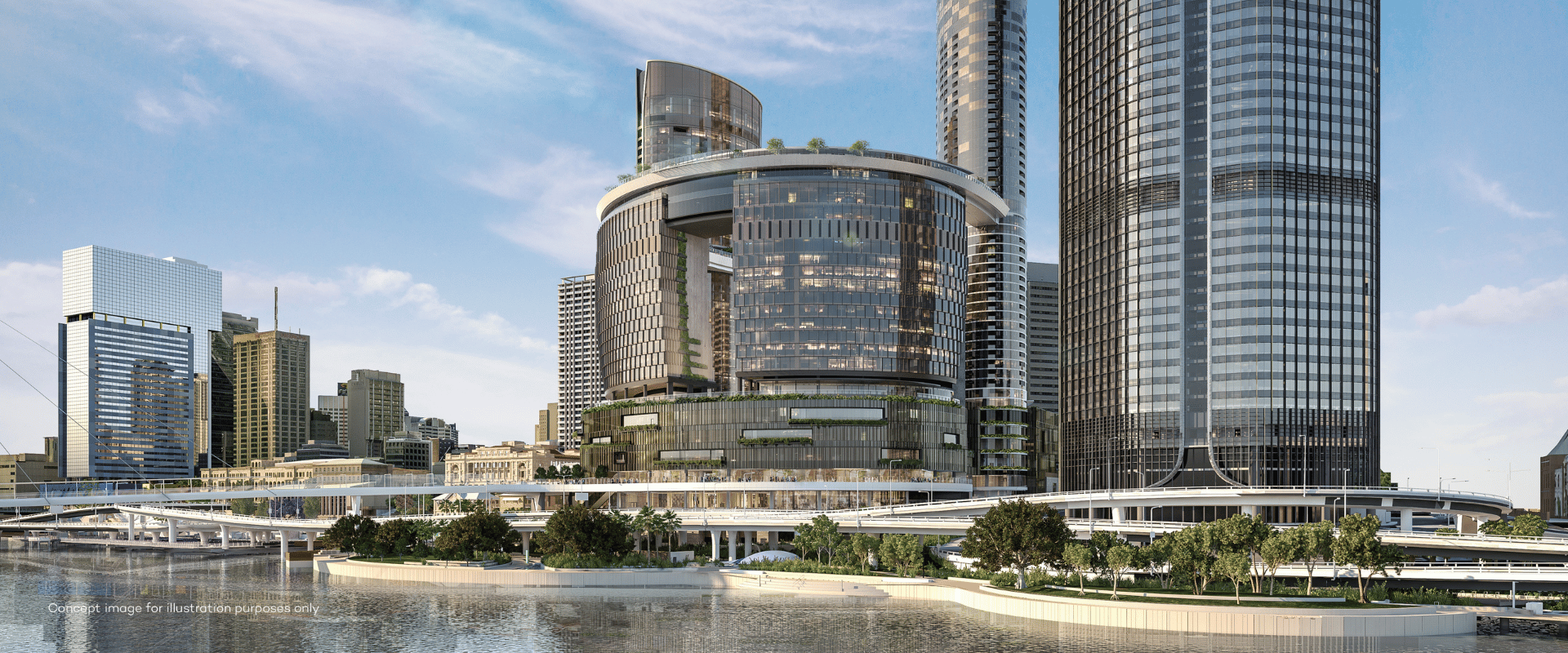
Connect with Queensland’s tourism industry
Every year, DestinationQ brings together professionals from across the tourism industry to recognise achievements, unlock opportunities, and celebrate our collective successes.
DestinationQ will return on Thursday 14 November 2024 at Queen’s Wharf, Brisbane.
Subscribe to the monthly Tourism Industry Newsletter to stay up to date with industry news, events and the 2024 DestinationQ Forum.
Cultural acknowledgement
We pay our respects to the Aboriginal and Torres Strait Islander ancestors of this land, their spirits and their legacy. The foundations laid by these ancestors—our First Nations peoples—give strength, inspiration and courage to current and future generations towards creating a better Queensland.

The Queensland Cabinet and Ministerial Directory
Queensland tourism continues to break records.
Published Wednesday, 05 April, 2023 at 04:35 PM
Minister for Tourism, Innovation and Sport and Minister Assisting the Premier on Olympics and Paralympics Sport and Engagement The Honourable Stirling Hinchliffe
- Queensland remains Australia’s favourite holiday destination
- Domestic visitors spend a record $27.8 billion in the year to December 2022, up 42.8 percent on pre-Covid
- Queensland welcomed 26.5 million overnight visitors in 2022 who spent a record $30 billion – eclipsing pre-COVID levels.
The Queensland tourism industry’s record recovery continues with the latest data from Tourism Research Australia (TRA) for the year to December 2022 showing a 26.5 million overnight visitors spent a record $30 billion.
Queensland recorded the highest amount of domestic overnight visitor expenditure among all states and territories at $27.8 billion, the State’s sixth consecutive record and highest ever total domestic spend.
The State’s domestic spend was up 42.8 per cent on the previous 2019 pre-Covid high.
For overnight visitor expenditure, nine Queensland tourism regions achieved records including Brisbane, Gold Coast, Tropical North Queensland, Sunshine Coast, Southern Great Barrier Reef, Southern Queensland Country, Townsville, Fraser Coast and Mackay.
Tropical North Queensland, the Sunshine Coast and the Outback achieved highs for holiday visitors.
Statewide holiday visits hit a record 11 million trips, an increase of 10 per cent on 2019.
Queensland’s international visitor industry is recovering off the back of the Palaszczuk Government’s $200 million international aviation war chest with spending climbing to $2.3 billion from 916,000 overseas visitors.
Business travel to Queensland reached $3.5 billion, up 7.4 per cent on pre-Covid spend with 5.2 million business visitors during 2022 and outperforming the national average during the December quarter.
Tourism Minister Stirling Hinchliffe said:
“Queensland tourism operators are working hard and achieving record results.
The State’s 11 million holiday trips confirm Queensland as the nation’s leading getaway destination and demonstrates our Towards Tourism 2032 roadmap is on track.
We’re seeing destinations across the state breaking records for overnight visitors spending to deliver the sixth consecutive record.
The number of business visitors continues to recover with the Palaszczuk Government’s $7 million incentive package encouraging businesses to pull the plug on video conferencing and return to face-to-face networking.
It’s terrific to see Southern Queensland Country, the Gold Coast and the Southern Great Barrier Reef visitors staying longer and enjoying even more of Queensland’s great lifestyle and holiday experiences.
The TRA data shows there’s more work to do on rebuilding international tourism, although the $200m aviation war chest is opening up more travel options for visitors to Queensland.
We’re leading the nation for recovery of New Zealand visitors reuniting with family and friends and seeing encouraging results from the UK, US, India and Singapore.”
Patricia O’Callaghan Chief Executive Officer, Tourism and Events Queensland said:
“Queensland has enjoyed a nation-leading position, but we are up against strong headwinds as we enter a competitive global market.
“Tourism and Events Queensland is ensuring Queensland stays top of mind for travellers with campaigns currently live across the world.
“In Australia and New Zealand, the ‘Queensland is Calling’ campaign aims to give consumers a new ‘why’ for travelling to Queensland, unearthing experiences and destinations the typical traveller to Queensland may not have experienced.
“Globally our campaign ‘A beautiful way to be’ shows international travellers that a trip to Queensland is more than a holiday, it’s an experience that will change your outlook, through deeper, more meaningful connections.
“Our trade partnership activity continues with more than 30 campaigns currently live, and we continue to build on our $750 million It’s Live in Queensland events calendar to help pave the green and gold runway to the Brisbane 2032 Olympic and Paralympic Games.”
Media: 0427 475 089
At the end of your visit today, would you complete a short survey to help improve our services?
Thanks! When you're ready, just click "Start survey".
It looks like you’re about to finish your visit. Are you ready to start the short survey now?
Queensland tourism data and source markets
Tourism is a $22 billion industry for the state and directly and indirectly employs 206,000 people. It is a vital industry for many of our regions. Queensland's tourism industry is made up of a network of stakeholders, including tourism businesses, industry associations, and government agencies who all work together to help attract tourists to Queensland and develop the industry.
DestinationQ is a partnership between the Queensland Government and the tourism industry involving ongoing engagement between industry and government to agree on and deliver key priorities to drive growth and jobs in Queensland's tourism industry.
This guide provides an overview of Queensland's tourism industry and information about Queensland tourism data and source markets.
- Next Tourism data and statistics
- Last reviewed: 17 Jul 2023
- Last updated: 17 Jul 2023
- Print topic

Working together to support sustainable nature-based tourism and protected area growth in Queensland
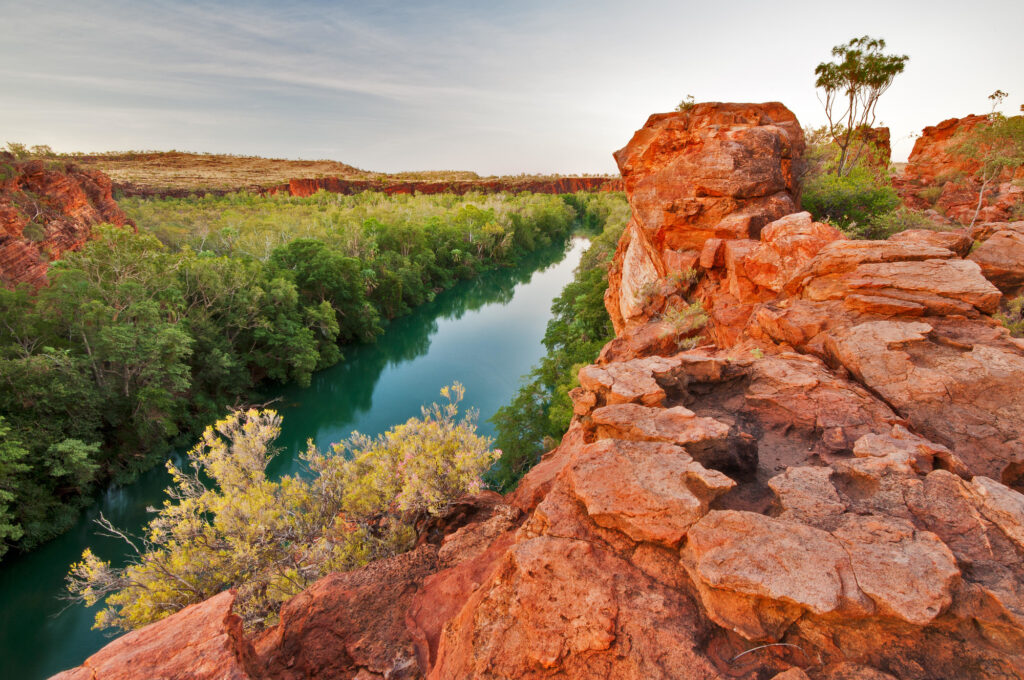
Nature underpins our tourism industry
Queensland’s national parks, marine parks and other protected areas sustain a highly valued nature-based tourism sector and play a vital role in conserving the state’s exceptional wildlife and wild places.
Taking care of nature is essential for Queensland’s tourism industry – worth $23 billion per year. But without investment and practical action to expand and manage the protected area estate, Queensland will lose ground to other states who are increasingly active in their efforts to promote sustainable nature-based tourism.
Protecting our exceptional natural diversity
Queensland is home to 85 percent of Australia’s native mammals, 72 percent of native birds and more than 11,000 plant species – but many of these are under threat. Well managed protected areas provide a vital haven for native species threatened by habitat destruction, feral animals, noxious weeds and the impacts of climate change.
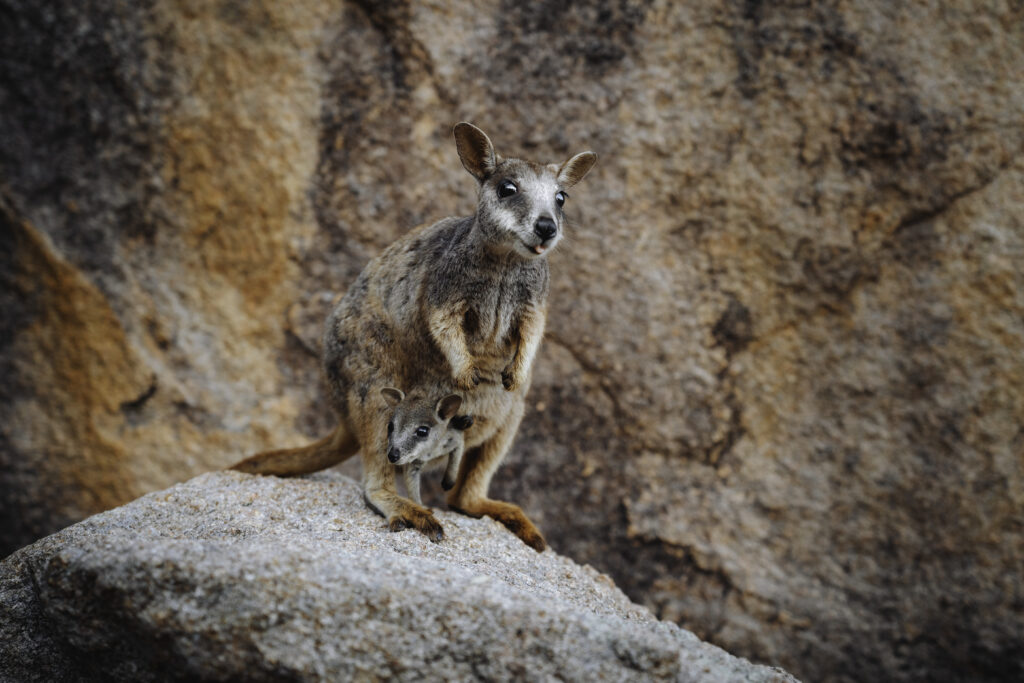
Investing in our people and culture
Government expenditure on protected areas delivers multiple benefits for people and nature, including tourism opportunities, regional development, local employment, recreation, health benefits, species and habitat conservation and protection of carbon stocks and ecosystem services.
We support increased collaboration with First Nations people in expanding and managing Queensland’s protected areas and fostering Indigenous-led cultural tourism.
We’re calling on the Queensland Government to commit to supporting nature conservation and tourism.
This must include additional funding towards:.

New national parks and private protected areas

Indigenous-led conservation opportunities

managing natural and cultural values
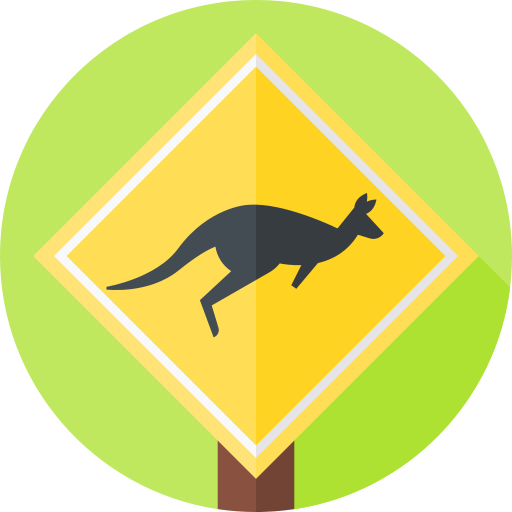
Nature-based and cultural tourism activities
We are an alliance of leading tourism and conservation organisations supporting the Queensland Government’s vision of a world class protected area system and a vibrant and sustainable nature-based tourism industry. We work together to call for increased investment to support expansion and effective management of the state’s protected areas.

news and updates
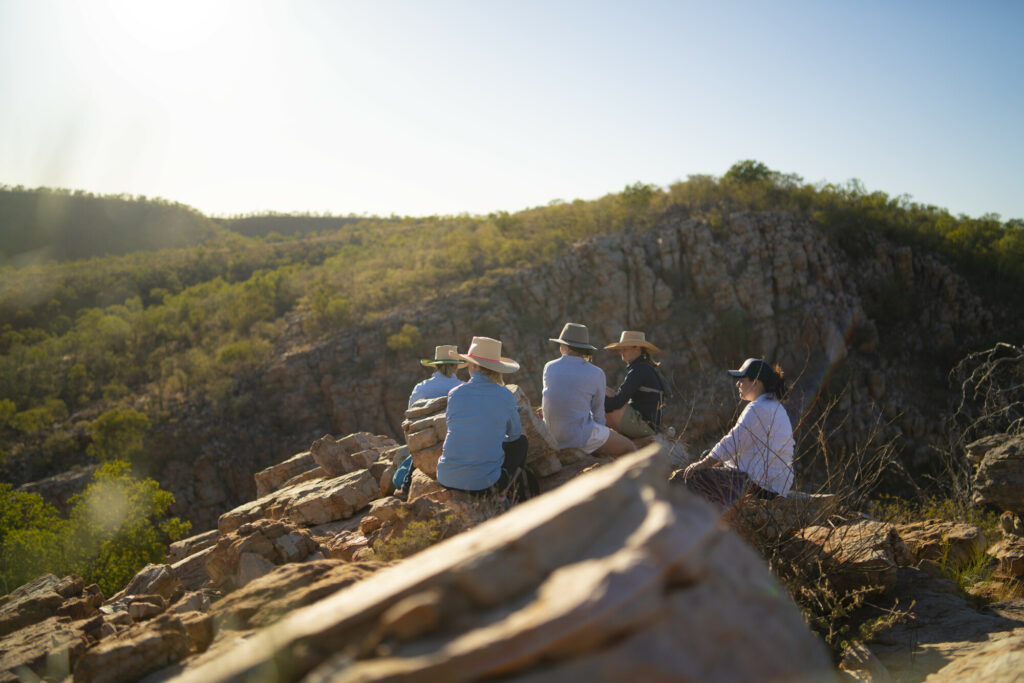
Submission to Queensland’s 2023-24 State Budget
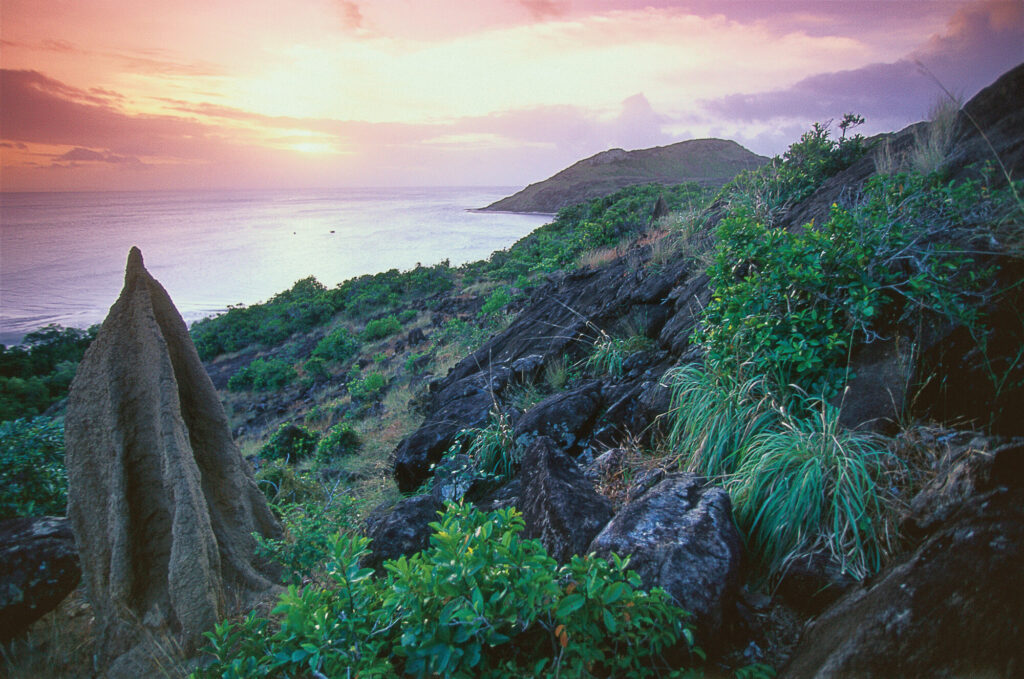
Queensland Tourism and Conservation Alliance backs plan to double State’s protected areas
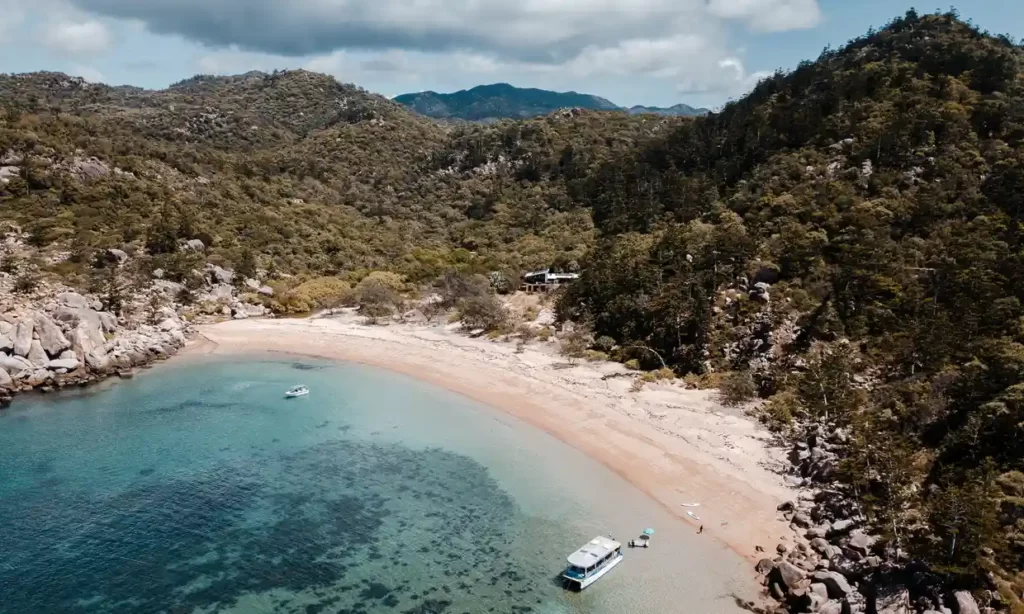
Tourism industry joins push to expand Queensland’s national parks
We would like to acknowledge the traditional owners of the many lands across queensland, and pay our respects to elders – past, present and emerging and extend that respect to all aboriginal and torres strait islander peoples., this has always been, and always will be aboriginal land..
- Skip to content
- Skip to navigation
- Click to chat
- Phone: 13 48 10

You are here: Home About Council News & Publications Media Releases 2024 April Townsville Region achieves globally recognised tourism sustainability certification
Townsville Region achieves globally recognised tourism sustainability certification
Date published: 19 April 2024
The Townsville region has met globally recognised sustainability standards to achieve ECO Destination Certification at the Nature Tourism level with Ecotourism Australia.
Townsville is the third destination in Queensland and the ninth in Australia to become an ECO Destination, solidifying the region as a leader in sustainable ecotourism.
It was funded to achieve the certification under the Queensland Government’s Eco-certified Tourism Destination Program which provided grants to councils and regional and local tourism organisations to support attainment of the high level ECO Destination Certification.
Situated at the doorstep of two World Heritage Areas, the Great Barrier Reef and the Wet Tropics, Townsville is a hub for iconic nature-based tourism experiences. The region boasts an incredible percentage of protected natural areas with 82 percent of its surface area managed to foster thriving natural values. Townsville region is also home to the popular tourist destination, Magnetic Island, and the internationally important Bowling Green Bay Ramsar Wetland.
“Ecotourism Australia is pleased to award ECO Destination Certification to the Townsville region,” said Ecotourism Australia Head of Destinations and Member Services, Ms Alyssa Sanders.
“Being adjacent to such remarkable environmentally and culturally significant natural wonders, it is important for, and indeed a responsibility of, the local tourism industry and all who visit and reside in Townsville to adhere to strong sustainability principles. “Townsville’s ECO Destination Certification not only inspires tourism businesses to implement responsible practices and achieve formal recognition, it also helps communicate expectations to tourists, and enhances visitor and community engagement with local sustainability initiatives.”
The region is committed to boosting the sustainability of its tourism product and eight local businesses are Certified through Ecotourism Australia’s globally recognised business programs. One of Townsville’s top attractions, Billabong Sanctuary, holds Advanced Ecotourism Certification and is part of Ecotourism Australia’s Hall of Fame for more than 20 years of continuous ECO Certification. Additionally, Townsville City Council operates the Advanced Ecotourism Certified Eco Catchment Tours, providing educational and interactive tours to enhance the local community’s connection to the area’s diverse land- and coastal-scapes.
The Certification application was led by Townsville City Council with collaboration from key stakeholders including Townsville Enterprise Limited, Queensland Parks and Wildlife Service and the Great Barrier Reef Marine Park Authority.
The Council’s commitment to their community in achieving a sustainability-driven future for tourism has been clear throughout the application process.
Townsville Mayor Troy Thompson said he was proud to see the region achieve ECO Destination recognition from Ecotourism Australia.
“Council is incredibly proud to have worked with Ecotourism Australia, Townsville Enterprise and our other key stakeholders to secure ECO Destination Certification for our city,” Cr Thompson said.
“As a Council we are continuously working to enhance our existing tourism offerings and creating new landmark tourism destinations, capitalising on our city’s position between the rainforest, wetlands and the Great Barrier Reef.
“We are thrilled to have achieved ECO Destination Certification and are looking forward to seeing how tourism and hospitality businesses across Townsville go the extra mile to showcase our city well into the future.”
Townsville Enterprise Limited Director of Visitor Economy and Marketing, Lisa Woolfe, congratulates Townsville City Council on the collaborative approach to securing this globally recognised sustainability certification for the city.
“With more than 76% of people wanting to travel sustainability, today’s announcement demonstrates Townsville’s credibility on a global scale to meet current and future visitor demand.”
“Townsville Enterprise is proud to have built our region’s destination brand “Townsville North Queensland - Up for Unexpected” to not only drive sustainable visitor growth but has also provided a strong foundation of research that supported the accreditation process.”
“We acknowledge the significant efforts from our eight Ecotourism certified operators who have heralded this title for a number of years, and continue to pave the way for the rest of our tourism industry.”
“Our region has always been at the forefront of sustainable industries, eco-tourism along with our strengths and potential in renewable energy, positions Townsville North Queensland as Australia’s most liveable green city.”
Queensland is transitioning towards a sustainable visitor economy, with a vision to be recognised as a global leader in sustainability and ecotourism.
Tourism and Events Queensland CEO, Patricia O’Callaghan said that this is a major milestone reached for the region and Queensland.
“Congratulations to the Townsville region on this wonderful achievement.
“The region is a nature-based tourism hub with two World Heritage Areas, the Great Barrier Reef and the Wet Tropics as it’s backyard.
“This is the third destination in Queensland to become ECO Certified and it’s a testament to the dedication of the region to increase their formal sustainability credentials.
“Queensland is proud to have the most ECO Certified tourism businesses in Australia, which underscores our industry’s dedication to environmentally responsible management of our stunning natural resources, while also providing visitors from across the globe the opportunity to immerse themselves in the beauty of Queensland.”
Townsville City Council was a recipient of the Queensland Government Department of Tourism and Sport’s Eco-Certified Tourism Destination Grant in 2022 to expand their destination sustainability certification.
Member for Townsville Scott Stewart said this certification helped bring even more eyes to the great tourism experiences in the region like Magnetic Island.
“The Queensland Government is working to position Queensland and our tourism destinations as leaders in sustainable tourism.
“It is great to see Townsville has achieved ECO Destination Certification under the program which provided up to $150,000 to eligible applicants to achieve certification.
“In line with Towards Tourism 2032 this program will help our tourism destinations meet a growing demand from tourists for the places they visit to prioritise low impact travel, a high quality nature based experiences and an ongoing commitment to sustainability.”
ECO Destination Certification at Nature Tourism level assesses 81 criteria centred on the four pillars of sustainability: sustainable management, environmental, socio-economic and cultural. The Certification is adapted from the Green Destinations standard, which is recognised by the Global Sustainable Tourism Council. By becoming an ECO Destination, Townsville joins a network of more than 200 international destinations promoting sustainable management, responsible tourism, and positive socio-economic, environmental and cultural impacts.
Ecotourism Australia’s Head of Destinations, Alyssa Sanders, is in Townsville today at the ECO Destination Certification Announcement event to award Townsville City Council with their official certificate and present to key stakeholders.
Learn more about ECO Destination Townsville on the Green Travel Guide .
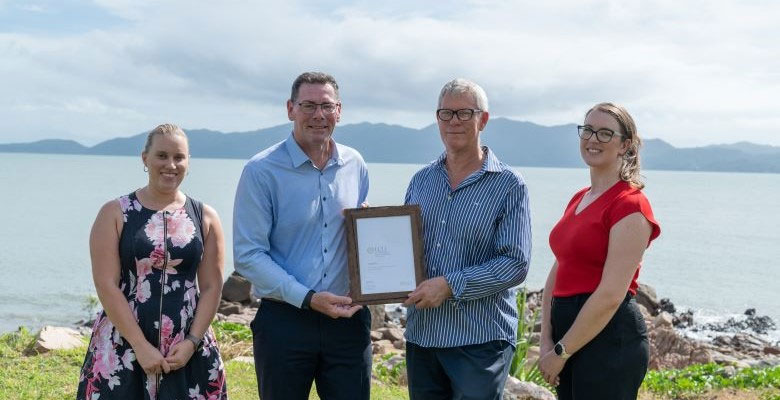
Hi, need assistance? Click to chat
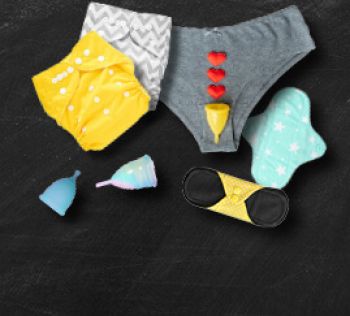

COMMENTS
Find out more about recreational and outdoor activities across Queensland: Parks, forests, recreation centres and outdoor adventures. Bike paths, cycling and walkways. Camping and caravanning - permits, where to camp, caravanning destinations and explore the caravanning parks directory. Boating and fishing - rules, permits, licensing and more.
With an eye on tourism, many regional towns also offer bespoke tours delivering a special connection with locals and the community. On this 1890-kilometre road trip, you'll travel from Brisbane to the Sunshine Coast, to Miles, Roma, Charleville, Cunnamulla, St George, Toowoomba then back to the river city. These regional Queensland towns are ...
Explore destinations, experiences and events that will change you. Visit the official site for Queensland, Australia. Discover everything Queensland has to offer. ... the Whitsundays region is a non-negotiable for visitors to Queensland. ... Tourism and Events Queensland acknowledges the Traditional Owners of Country and recognise their ...
Queensland. From the bright lights of the Gold Coast to the technicolour underwater world of the Great Barrier Reef, Queensland has a slice of paradise to suit every traveller. Home to more than 1,000 ecosystem types and five World Heritage-listed sites, there's something altogether magical about the beauty of Queensland.
Tourism regions maps. Maps of the tourism region boundaries within Australia. This release provides tourism region maps and an allocation file for each and state and territory in 2023, based on the 2021 edition of the Australian Statistical Geography Standard (ASGS). It provides:
Make the most of this extraordinary place. Greetings from Queensland: all 1,727,000 square kilometres of our sunshine-drenched state. Clearly space isn't an issue here, but nor is diversity - between our borders, terrain ranges from reef to rainforest to arid desert.. When it comes to things to see and do, we have plenty in store for you.
Tourism Regions TOURISM REGIONS 2023 - QUEENSLAND ©2023 Tourism Regions Based on Statistical Area Level 2 in ABS Edition 3 2021 See Inset. Australian Government Australian Trade and Investment Commission Tourism Research Australia . Author: Jessica-Barritt-Eyles [Canberra]
You'll find most of the towns and tourism centres along the east coast of Queensland and for good reason. You'll see below the Great Barrier Reef runs along almost the entire coastline and is dotted with tropical islands of all different sizes. The Queensland Coast is virtually a non-stop waterpark full of beaches, diving, fishing, island adventures, sun, sand and surf.
Public Transport. Queensland has an extensive regional train network that will get you to many of the regions listed above. Greyhound operates numerous routes and offers an East Coast Pass. South East Queensland uses the Go Card. It can be used on all Translink buses, trains (including the AirTrain), ferry and tram services in greater Brisbane, Ipswich, Sunshine Coast, and Gold Coast.
Queensland (pronounced KWEENZ-land) is the northeastern state of Australia, famous for natural wonders, such as the Great Barrier Reef, the Daintree Rainforest or K'gari.Its population of 5 million are mostly found in the capital Brisbane and the nearby city of Gold Coast in southeast, whereas much of the rest of the state is sparsely populated.. Climate shifts within Queensland; the inland ...
Brisbane's idyllic coastline is dotted with islands waiting to be explored. Seek out secluded snorkelling spots, hand-feed a wild dolphin and discover a shipwreck beneath the sea. It's all possible on Brisbane's islands . Shop the markets and designer boutiques. Brisbane's shopping scene has something for everyone.
Tourism data and statistics. Information about visitors and tourism trends can be a great help in planning and operating your tourism business in Queensland. For example, you can use current research and data to: predict upturns and downturns in certain areas of your business. get a better understanding of what visitors want (and don't want)
Connect with Queensland's tourism industry. Every year, DestinationQ brings together professionals from across the tourism industry to recognise achievements, unlock opportunities, and celebrate our collective successes. DestinationQ will return on Thursday 14 November 2024 at Queen's Wharf, Brisbane. Subscribe to the monthly Tourism ...
The region is the major administrative and commercial centre and focus of tourism within Queensland. The Brisbane region comprises the greater Brisbane metropolitan area, centred on the City of Brisbane and also including the Logan , Redland , Moreton Bay and Ipswich local government areas.
Whether it's dining among treetops, exploring lagoons, soaking up Indigenous culture, or befriending wildlife, it's hard not to resonate deeply with Queensland.
For overnight visitor expenditure, nine Queensland tourism regions achieved records including Brisbane, Gold Coast, Tropical North Queensland, Sunshine Coast, Southern Great Barrier Reef, Southern Queensland Country, Townsville, Fraser Coast and Mackay. ... Business travel to Queensland reached $3.5 billion, up 7.4 per cent on pre-Covid spend ...
Here you will find Queensland's domestic visitation results and commentary based on the latest National Visitor Survey data available for the year ended December 2023. These results cover visitor numbers, nights and spend across visitor purposes for Queensland as a whole and for each tourism region.
Nature-based tourism including ecotourism. Queensland tourism data and source markets. Tourism is a $22 billion industry for the state and directly and indirectly employs 206,000 people. It is a vital industry for many of our regions. Queensland's tourism industry is made up of a network of stakeholders, including tourism businesses, industry ...
There is a large range of supports available for businesses around Queensland following recent weather events. We've collated everything relevant to the tourism industry and put it all on one page. There's also a summary of TEQ's marketing activities that are supporting regions to recover. Select below to learn more. Discover now.
From Noosa to Mooloolaba they range from world class resorts to family apartments for that perfect holiday experience. The Brisbane Region. Set in the second-fastest growing region in the world today is Australia's most liveable city, the Queensland capital Brisbane. In the former penal colony life revolves around the beautiful Brisbane River.
Queensland's national parks, marine parks and other protected areas sustain a highly valued nature-based tourism sector and play a vital role in conserving the state's exceptional wildlife and wild places. Taking care of nature is essential for Queensland's tourism industry - worth $23 billion per year.
Day 1: Arrive in Cairns and meet the reef. Brace yourself, because two of the five World Heritage-listed wonders in Queensland are about to come hard and fast at you. First stop: Head to the Cairns Marina to launch your adventure into the first World Heritage-listed site in this list of must-do things in Queensland - the Great Barrier Reef.
Fraser Coast Tourism and Events is the regional tourism organisation responsible for implementing marketing strategies to promote the Fraser Coast region as a travel destination. Email: [email protected] Website: www.fcte.com.au Phone: 07 4191 2600. Fraser Coast Tourism and Events PO Box 488 Hervey Bay, QLD 4655
The Townsville region has met globally recognised sustainability standards to achieve ECO Destination Certification at the Nature Tourism level with Ecotourism Australia. Townsville is the third destination in Queensland and the ninth in Australia to become an ECO Destination, solidifying the region as a leader in sustainable ecotourism.